The best U.S. cities
to escape winter
John Lee
Dec 8, 2013
The Globe and Mail
Most of us get a little cabin crazy at some point during our long winters. But a quick hop south can thaw you faster than a snowflake on a brandy-warmed tongue – so long as you know where to go. After years of chill-avoiding jaunts to the United States, I've found several spots well-worth peeling off your fleece for.
"Always check the weather forecast for winter visits to Austin – it does get cold occasionally," teases local blogger Lizzy Newsome (briteshiny.com), adding that seasonal temperatures up to 18 C keep the Texas capital's al fresco beer gardens busy. Her favourites? Banger's and Easy Tiger.
While boozing is a great way to meet ever-friendly Austinites, some neighbourhoods also invite extensive T-shirted wandering. South Congress is popular, but Newsome also suggests North Loop for funky vintage stores, bars and eateries.
"We're constantly in festival mode," she says, recommending the upcoming Trail of Lights (austintrailoflights.org) and Carnaval Brasileiro (sambaparty.com). "January's Restaurant Week (restaurantweekaustin.com) is my top pick – and it's not just Mexican food and barbecue!"
Or consider unfreezing your brain cells in music-loving New Orleans; diving into the galleries (and oasis-like golf courses) of Arizona's Phoenix/Scottsdale metropolis; or flicking through San Francisco's quirky bookstores – especially in the ever-balmy Mission district.
While many Canadian snowbirds swear Florida is the only place worth flocking in winter – several readers have recommended the sunshine state's quirky Key West over theme parky Orlando – I'd also suggest Miami for its raised temperatures and eclectic city action.
"Our winters won't stop you doing anything you'd do here the rest of the year," says culture blogger Jordan Melnick (beachedmiami.com). "You can jump in the ocean in December because the sun's usually going to warm you up in under a minute."
But it's not all about seaside shenanigans in South Beach.
He recommends Wynwood, a gallery district lined with graffiti murals. "If you really want to escape the tourist bubble, spend time in Little Haiti where Sweat Records, Little Haiti Cultural Center, Chef Creole and American Legion Park are all worth visiting."
Encouraging exploration, he adds that: "This is a city unlike any other in the U.S. Nowhere else has our particular mix of ethnicities, natural environments – ocean meets swamp – and cultural contradictions. If you visit Miami and it feels like anywhere else, you're doing it wrong."
Exploration is also the secret to Southern California. Multifaceted Los Angeles and small-city Santa Barbara lure many, but underrated San Diego was a revelation on my last-winter trip. Blogger Julia Wheeler (sandiegosongbird.com) offers several reasons to visit.
Palm-lined Balboa Park – with its museums, attractions and fragrant gardens – is a must-see, she says. "Also head to Point Loma for a hike around Cabrillo National Monument park, exploring the tide pools on the way. And on Saturdays, the city's sprawling Little Italy Farmer's Market is filled with delicious food and drink."
Save time for the sunny North Park neighbourhood, too. "You can tour fantastic microbreweries or enjoy craft cocktails here – try Polite Provisions – and also eat at hipster and farm-to-table restaurants," says Wheeler, recommending Jayne's Gastropub and Urban Solace.
But if all you need is spice to melt your Canadian winter blues, she has an extra hot tip: "We have the best Mexican food outside Mexico here. As well as the restaurants in Old Town, I'd recommend El Indio on India Street in Mission Hills or Ponce's on Adams Avenue in Kensington."
OUR READERS ADVICE
•I generally loathe the sunbelt cities, but will make an exception for Austin and Key West. Both are tremendous fun. In Key West, you can be at a barstool at 9 a.m. – the person next to you may be a bum or a CEO, and it's all perfectly fine. @mrdavidwhitley
•Kaanapali-Maui works quite well for us. West Coast convenience combines with relaxed easy going "island time" – with opportunities to enjoy fine dining, snorkelling, etc. The on-beach sidewalk connects all the hotels, and in the middle is shopping, museum, dinning etc. And there's a cheap happy hour here! @advcardio
•Maybe go to Tucson. Those neat cacti. And you can drive in the desert and stay at retro trailers in Bisbee.@reidontravel
•The "anything goes" attitude in Key West is quite something. I was also partial to the kayaking and key lime treats on my visit. @no_fixed_plans
•Biloxi, Mississippi is an underrated destination. Casinos, beaches, Southern cuisine, music, world-class golf, entertainment, etc. @golfergt
•Wailea, Maui! Beaches and sun! @aladyinlondon
•New Orleans: not as sunny as a place like Phoenix, but you're in the Big Easy! Average temperatures are pleasant: 16-17 Celsius. And there are no crowds! @Tours_By_Locals
•Charleston, South Carolina was sunny and delicious when I went earlier this month! @kitchenettefind
•Pensacola is on my bucket list … but Los Angeles is always a sure bet. @YashYanthi
•It has to be Miami. Specifically South Beach. Preferably the Tides Hotel. @recitweets101
•Scottsdale: for the spas and tequila! @nikkibayley
•Los Angeles. Was enjoying the sun at Santa Monica beach two days ago. @theAlexPalmer
•The Florida Keys are great. Beautiful and laid-back Islamorada is awesome, plus go for a snorkel tour at John Pennekamp Coral Reef State Park. @travel_smith
•Honolulu for its sunny weather, Fort DeRussy beach and its free Army Museum. There's also shopping, shave ice and a super variety of food and activities like hiking Diamond Head! There's a real tropical, urban feel here with an international flavour. @travelling_mom
•San Diego and Austin. Both cheerful, high-functioning cities with balmy weather and oodles of savoury treats – perfect for winter-ravaged Canadian zombies. @SiSiTravels
•Fort Lauderdale. Close to Miami, nice beaches, good food and I love the water taxi. Sarasota is nice on the Gulf, too – Siesta Key is a stunning beach for sunsets. @chowandchatter
•Austin. Incredible culinary scene, hip music scene (check out Stubb's), relaxed watering holes (we love Peche) and so much more. @discoverusaCA
•We recommend getting outdoors in Scottsdale. @FourSeasonsPR
|
Arthur Frommer: The lessons travel has taught me
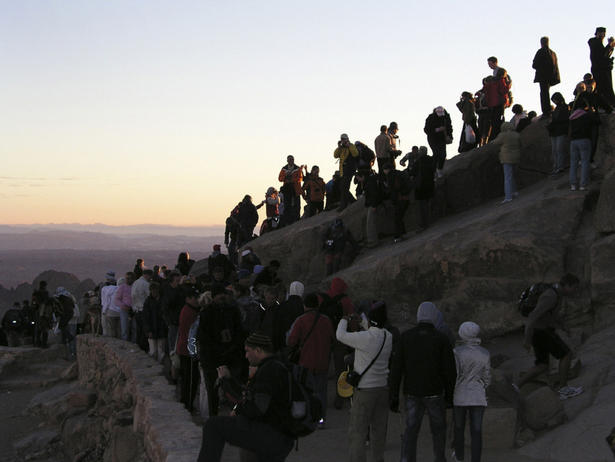
Arthur Frommer
Special to the Star
January 17, 2011
As we enter a new year, I'd like to reprint part of an essay I prepared some years ago on the lessons that travel has taught me.
To a hundred countries and millions of miles, I've travelled for some 50 years, and I am a changed person because of it. Simply being in unfamiliar surroundings, among new and different people, alters one's consciousness and creates new beliefs—like these:
We are all alike. I am in the dark, dung hut of a Masai family in eastern Africa. Through an interpreter, the woman of the house tells me that she hopes to learn to read. And why? So that she can study a handbook on raising children.
Travel has taught me that, despite differences in dress and language and condition, all the world's people are essentially alike. We have the same urges and concerns; we yearn for the same things. And those who patronize others or regard them as funny or backward are foolish indeed; they have not yet learned the lessons of travel.
We all think ourselves virtuous. At the bar of an Amsterdam café, I am talking with a Dutch friend. Last night, he tells me, a nationwide telethon raised the equivalent of some $80 million for cancer research. "Only in Holland," he says, "would there be such an outpouring."
We all consider ourselves the best; we all believe in the superiority of our own country and culture. How many times have you heard politicians proclaim this or that nation to be the finest on Earth? Travel rids you of that smug chauvinism; it exposes you to the finest in every land and makes you distinctly uneasy when you later return home and hear people proclaiming their own nation to be better than others.
We are responsible for one another. It is the early 1980s. Dancing down a broad boulevard in Zagreb is a succession of laughing, gaily clad groups gathered there for a festival of Yugoslavia's national folk dances. From the curb, I watch Muslims and Christians, Bosnians, Croatians and Serbs celebrating in complete harmony.
Now, years later, and because of travel, I remember them as distinct human presences, not as abstractions; I get almost physically ill when I read of the violence among them. I feel the same intimate bond with the Protestants and Catholics of Northern Ireland, whose cities I visited at the height of the Troubles, and with the people of both Egypt and Israel, where I once led groups of tourists. Travel makes it impossible to ignore the sufferings of others simply because they are far away; it erases distance and transforms you into a more sensitive citizen of the world, the only kind of person who can contribute to peace.
There is no single solution for human problems. I am lying in a copper bathtub filled with naturally carbonated water in a bathing establishment in the Belgian city of Spa. And though my mind tells me that, scientifically speaking, water cures are rubbish, I feel something happening to my body and suspect that the 300 million Europeans who embrace such remedies may not be as wrongheaded as our own medical establishment would have us believe. I go to countries like Holland, where people by law may not be fired from their jobs, and to my astonishment meet wealthy conservatives who staunchly defend this prohibition. Travel reveals a whole range of unusual practices that may succeed in differing contexts; it suggests new approaches for your own society and keeps you receptive to novel proposals and experiments in every field.
All people should be "minorities". I walk the great cities of China and gradually realize that, in their midst, I am part of a minority in much the same way that others are minorities in the city where I live.
Travel teaches us that it is absurd to react to people according to their colour. It makes everyone a member of a minority group on occasion. The experience changes all of us.
Travel keeps us young. I sit on that airplane, eating execrable food, breathing stale air, feeling jet-lagged and achy, and tell myself that travel is deeply fatiguing and unnatural. And yet when I emerge in an unfamiliar airport and city, I feel challenged and alive. There is still another language to attempt, a new history to absorb, another culture to encounter. And though some of it may dismay rather than enchant, it is never uninteresting. And even when you believe you have exhausted the store of new destinations and cultures, you discover that you can enjoy them on a deeper level. I'm currently studying Italian so that I can better enjoy a country I've visited a hundred times.
Travel teaches us humility, the best human trait. During the course of a long trip, I arrive at last at an English-speaking country—say, Australia—and grab for a local newspaper. Wonder of wonders, there's not a single story in it about my own U.S. We learn, through travel, that the world does not revolve around us alone, that we no longer rule the Earth, that not everyone worships our lifestyle or envies us. That kind of discovery makes us different from those puffed-up, close-minded boosters and braggarts who sometimes dominate our public discourse. You become a quieter American and, in my opinion, a smarter and more productive one.
Travel, for many, is merely a form of recreation. But travel is now becoming recognized as education. It has changed my life, and I believe that you, too, may want to reflect on how it has altered your own consciousness. Ours is the first generation in human history to travel to other continents as easily as we once took a trolley to the next town. Dare we hope that access to a larger world will result in more understanding, in human beings more tolerant and peaceful?
Arthur Frommer is the pioneering founder of the Frommer's Travel Guide book series. He co-hosts the radio program, The Travel Show, with his travel correspondent daughter Pauline Frommer. Find more destinations online and read Arthur Frommer's blog at frommers.com. Order your copy of Frommer travel guidebooks at www.StarStore.ca.
|
Perfect’ timing for a U.S. shopping trip

Globe & Mail
Diane Nice
November 8, 2010
For serious shoppers, the United States will soon be offering up the ideal set of bargain-hunting conditions: a weak greenback, recession-weary retailers and Black Friday.
The Canadian dollar will remain close to parity through the end of 2011, so it’s “the perfect time” for some cross-border shopping, says Ashif Ratanshi, head of branch investments, deposits and direct investing at RBC Economics.
Whether you’re shopping for new shoes or a U.S. investment property, there are ways to make cross-border transactions safer, easier and less volatile. Mr. Ratanshi, who scored some good clothing deals on a recent New York shopping trip, recommends using U.S. dollars, through a U.S. savings account, U.S.-dollar credit card – or both – to eliminate exchange-rate fluctuations.
“When you go down, if you use a U.S.-dollar credit card, you know exactly how much you’ve spent, and how much you’ve paid with respect to the exchange rate, and you’re not subject to all that volatility.”
If you pay a U.S. retailer with a Canadian credit card, he says, “the volatility comes in because you never know what the merchant is going to charge and what the fees are behind that exchange rate because now you’re going through a number of providers.”
Mr. Ratanshi offers the following tips for shopping in the United States:
1. Open a U.S. savings account.
Look for an account with low or no fees that enables you to take advantage of exchange rates when they are favourable. Some financial institutions will also allow you to purchase U.S. dollars through online banking at a preferential rate by simply making a direct transfer from your Canadian dollar bank account to your U.S. savings account.
2. Use a U.S. dollar credit card.
Frequent U.S. travellers should consider a U.S. dollar credit card, which gives cardholders the flexibility to make transactions in U.S. funds and avoid the hassles of exchange rates or daily currency fluctuations. Coupled with a U.S. savings account, it also allows holders to take advantage of favourable exchange rates over time using dollar-cost averaging and then pay off their card balance using U.S. funds from their savings account.
3. Consider alternatives to cash
Debit or credit cards and U.S. travellers cheques are easy, secure alternatives to carrying large amounts of cash when shopping or travelling. Credit cards often come with purchase protection and extended warranties.
4. Make cross-border banking work for you.
If you often travel to the United States or are one of the thousands of Canadian snowbirds who head there over the winter, consider a cross-border banking arrangement that provides access to your banking services on both sides of the border, including U.S. mortgages. Most of the big Canadian banks provide this service.
5. Pack travel insurance.
Regardless of the length or type of trip, it's important to consider emergency travel insurance as medical treatments in the U.S. can be very expensive. Frequent travellers should consider a multi-trip annual plan to save both time and money.
6. Look for easier financing options.
If you are thinking about buying U.S. real estate and you have sufficient equity in your current home, consider a loan or line of credit secured against your Canadian home to buy your U.S. property. This will eliminate the need for a U.S. mortgage approval.
|
Where to travel in 2010
Forget the ‘staycation': This is the year that travel makes a comeback. From remote destinations such as Laos and Nicaragua to grand events such as the Winter Olympics in Vancouver
Jan 3, 2010
Tasmania
 Tasmania is Australia 's island outpost, a remote destination that's ideal for thrill seekers looking for the next big adventure. To see Tassie's jaw-dropping, prehistoric-looking scenery, embark on the 80-kilometre Overland Track, a five- to six-day trek that snakes between Cradle Mountain and Lake St. Clair through moorlands, forests, glacial lakes and jagged mountains. Between December and March, hardcore rafters can conquer the treacherous rapids of the Franklin River (a full descent takes about a week). Those who are fainter of heart can stick to the island's wine route and explore the emerging art and architecture scene. According to James Lohan of the boutique hotel website Mr. and Mrs. Smith (mrandmrssmith.com), sybarites won't be disappointed: “The just-opened Mona Pavilions in Hobart teams state-of-the-art rooms with a winery and a future museum, and the Saffire resort, opening in 2010, is eagerly awaited by nature lovers and serenity-seekers alike.” (Visit www.moorilla.com.au; www.saffire-freycinet.com.au.)
Mexico
 After years of being hammered by bad press about political protests, drug-related violence and swine flu, Mexico is primed for a comeback. The state of Oaxaca – home to the pretty colonial capital of Oaxaca City and the chilled-out surfing town of Puerto Escondido – made Lonely Planet's Top 10 Regions of 2010 list and Mexico City received a mention on Frommer's annual Top 10, citing that the city is “doing well what it's done well for over four centuries” as a cultural and ethnic nexus for Mexico and Latin America. David Lytle, Editorial Director of Frommers.com, adds that the capital is a solid destination for city-oriented travellers., with top museums, amazing archaeology, and perhaps the best food of any city in North America. And in case you thought the only accommodation options are all-inclusive, the hip Mexican hotel empire Grupo Habita has a clutch of chic boutique hotels from Mexico City (www.hotelhabitamty.com) to Playa del Carmen and is planning to bring modernist glitz back to Acapulco with the reopening of the Boca Chica on Caleta Beach.
Shanghai
On the heels of Beijing's 2008 Olympics, Shanghai is getting ready for her own clos-up as host to this year's World Expo from May to October. “The World Expo may have lost some of its allure through the years,” says travel blogger Keith Jenkins, “but the Chinese government is ensuring this one gets noticed with dazzling pavilions, mind-boggling architecture and state-of-the-art technology.” The event is expected to draw 70 million visitors and 200 participating countries, including Denmark – which plans to bring in a million litres of seawater and Copehagen's Little Mermaid statue for its display. Don't leave without experiencing the Shanghai skyline from a boat on the Huangpu River, says Jenkins. “You'll pass the stately colonial buildings of the Bund and the glittering skyscrapers in Pudong. The never-ending flow of boats that ply the river will keep you entertained if your neck starts to ache from looking up at some of the tallest buildings in the world.”
British Columbia
 In February all eyes are on Vancouver as it hosts the 2010 Olympic Winter Games. With improvements in the Sea to Sky Highway and the recently expanded Skytrain zooming from airport to downtown in 25 minutes, Vancouver is ready for the influx of sports fans, athletes, and journalists. But the Olympics last only two weeks and B.C.'s real draw is its vast, stunning wilderness. To the north, the unspoiled archipelago of Haida Gwaii is Canada's Galapagos, an exquisite expanse of mountains, inlets, and old-growth rain forests with strong native roots and an unparalleled collection of vegetation and wildlife that includes whales, black bears, sea lions and some 1 million seabirds. The backcountry terrain of the Monashee Mountains and the more developed Revelstoke resorts are “it” spots for skiers and snowboarders. And with a vibrant restaurant scene in Vancouver and a growing epicurean community in the Okanagan Valley, B.C. is adding fine food and wine to its list of attractions.
Nicaragua
The Nicaragua of the 1970s and 1980s – a country associated with the Sandinista revolution and the scandalous Iran-Contra affair – has evolved into Central America's eco-tourism it-spot. It's less well-trodden than Costa Rica and Guatemala, less Americanized than Panama and safer than El Salvador. It has active volcanoes that can be climbed, hot springs that are suitable for soaking, pristine white sand beaches, and lush rain forests that cover more than 20,000 square kilometres of the country. And hotels are arriving, including the newly opened Jicaro Island Ecolodge: a luxurious environmentally friendly collection of casitas that's situated on a private island in Lake Nicaragua. If you tire of beachcombing and of doing sun salutations on the floating yoga deck, then take a boat ride across the lake to Mombacho Volcano and hike up to the cloud forests for some wildlife watching.
South Africa
More than 15 years after the fall of apartheid, South Africa makes history again as the FIFA World Cup descends on the African continent for the first time ever. While tickets and accommodation won't come easily (matches will be hosted in several cities in June and July), nothing compares to revelling in the festive World Cup atmosphere. “Cape Town will be the biggest winner,” says Keith Jenkins, founder of the Velvet Escape travel blog (www.velvetescape.com ). “The city's spectacular location, fronting Table Bay and backed by the iconic Table Mountain, its beaches, gastronomic delights, stunning scenery, and unique flora and fauna make it a dream holiday destination.” For a less frenetic experience, consider escaping to South Africa's rugged bushland. Hikers head to the scenic Drakensberg, a 1,000-kilometre-long mountain range, and the lunar landscapes of Vensterval Trail in Richtersveld Transfrontier National Park which is considered the country's wildest national park. You can also opt for viewing elephants, white rhinos and lions in Hluhluwe- Imfolozi Park, South Africa's oldest game park.
The 'Stans
We've been curious about them since Borat exposed his homeland to Hollywood. Lonely Planet founder Tony Wheeler tipped us off to the Central Asian republics' allure last year, calling them exotic, quirky and interesting. And even though we may not be able to pronounce them perfectly, Tajikistan, Kazakhstan, Uzbekistan and Kyrgyzstan are on our radar for good reason. These ex-Soviet republics are indeed unusual, a curious collision of a vast and diverse landscape, a legacy of harsh Communist rule and a history that's rich with ancient cultures, intricate Islamic architecture and nomadic tribes whose descendants still roam the land. Go now before the hotel developers and restaurant chains realize the potential.
Bhutan

Paula Bronstein/Getty Images
There was a time not too long ago when Bhutan had no currency, no phones and no electricity. Until 1972, outsiders weren't allowed into the tiny Himalayan kingdom. But times have changed, and despite its isolated locale and seemingly archaic practices, Bhutan is now welcoming foreigners in its own way. Measures are in place to avoid overcrowding and to attract the “right crowd”. This is not a place for budget travellers: Visitors have to pay a minimum of $200 U.S. per day, and sightseeing excursions are limited to guided visits to stunningly positioned Buddhist temples – the Tiger's Nest Monastery hangs on a sheer rock face – and mountain hikes like the Jhomolhari Trek, which passes through remote villages. In the end, it's a small price to pay to visit the happiest country in the world, where people value Gross National Happiness over Gross National Product.
Brazil
Compared to well-trodden Argentina and Chile, Brazil is misunderstood. We want to samba during Carnaval and float down the Rio Negro, and yet we don't know much about the rest of this vast and diverse country. Future host of the FIFA World Cup (in 2014) and the Summer Olympics (in 2016), Brazil is inching its way up everyone's hot list, so you should get there before the tourist hordes. One of its best kept secrets is Fernando de Noronha. Only 750 visitors per day are allowed on this archipelago of white-sand beaches, windswept cliffs and colourful sea life; and they have to pay a hefty environmental tax for the privilege. For art connoisseurs, Sao Paolo's art biennal (bienalsaopaulo.globo.com) is the second oldest in the world – it returns this fall – and the sprawling Inhotim (www.inhotim.org.br) is a one-of-a-kind publicly funded cultural hybrid that includes a contemporary art gallery, sculpture park, botanical garden, and ecological reserve.
Laos
Off-the-beaten-path Laos is the forgotten country of southeast Asia. There are fewer tourists and fewer foreign influences than in Vietnam and Cambodia, which allows for less crowded and more authentic cultural experiences at ancient sites like the Wat Phou temple and in the capital city of Vientiane. Tony Wheeler recommends starting a Laotian adventure in Luang Prabang, the ‘capital' of the northern region which has fine old French colonial buildings, charming little hotels, Buddhist temples and monasteries and superb bars and restaurant. “It feels like one of those towns in Tuscany or Provence that are too cute for the postcards,” he says. In December 2009, China and Laos signed an agreement to build a cross-border nature reserve to better protect Asian elephants and other endangered species in the area. The reserve in Laos and China's Yunnan province will cover an area that is home to approximately 250 wild elephants.
The experts' favourites
BRAZIL: JAMES LOHAN Uxua Casa According to Lohan of the Mr. and Mrs. Smith website, this hotel – in the fishing village of Trancoso in Bahia – is Brazil's coolest new green hotel. The owner, Wilbert Das, is the former creative director of fashion label Diesel. www.uxua.com
LAOS: TONY WHEELER The Laos Elephant Festival takes place in Sainyabuli every February. Wheeler, the co-founder of the Lonely Planet guidebooks, was there in 2009 and may go again in 2010: “If you've ever wanted to get up close and personal with a pachyderm, this is the place to do it.”
BHUTAN: KEITH JENKINS Chimi Lhakhang Jenkins, founder of the Velvet Escape travel blog, suggests you take a stroll through the rice fields and along the trail to this temple, also known as the Divine Madman temple. The Bhutanese, dressed in their finest attire, bring their offerings to the temple every Sunday. M.S.
Special to The Globe and Mail
|
Las Vegas is the
Centre of attention
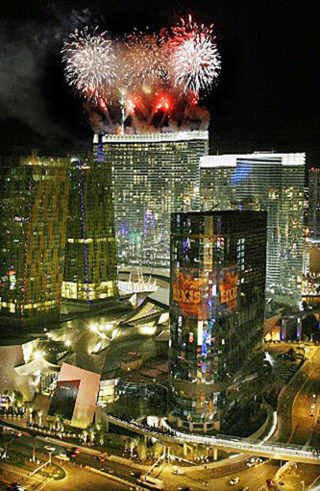
Spectacular new $8.5 billion complex might
just
be Las Vegas' biggest gamble ever
Toronto Star Dec 20, 2009
LAS VEGAS–"I think of it as The Emerald City," laughed Kathy, my driver from the airport to City Center. And you don't have to be a fan of The Wizard of Oz to agree with her.
No matter what time of day or what angle you view it from, you're dazzled by a combination of lofty verticals and jagged horizontals that glisten brightly in the sun or shimmer in multi-coloured splendor after dark.
City Center might be the biggest gamble in the history of Las Vegas. It's a new complex of hotels, shops and casinos tucked off to one side of the famous Strip that cost $8.5 billion (U.S.), fills 27 hectares, boasts six soaring towers and – when completed – will add more than 6,000 rooms to a tourist destination that is currently slashing prices to try to fill the spaces it already has
The MGM Mirage conglomerate (along with a little help from some friends in Dubai) is the main force behind it all and they hold pride of place with Aria, the 4,004-room luxury hotel and casino that opened to the public at midnight on Wednesday.
To say that Aria has redefined the look and feel of Vegas hotels would be an understatement.
Lay to rest the world of faux Venice, imitation Egypt and ersatz Paris. Aria exults in natural stone and wood, with metal and glass providing the highlights.
Some $40 million worth of modern art adorns the complex, with my favourite being Silver River, a 25-metre cast of the Colorado River that Maya Lin made out of reclaimed silver and proudly mounted behind a glass wall at the front desk.
Aria is the only building in this new complex to allow gaming, but they've even tidied up the world of slot machines and blackjack tables by adding a new air filtration system that sucks the smoke down and out for maximum efficiency.
And every room has computer technology that Hal from 2001: A Space Odyssey would have wept over.
You're greeted by name upon your first entrance, the drapes are automatically drawn to show you the view and you have one-touch control of all the lighting, temperature and entertainment features in the room.
The Vdara Hotel and Spa is just outside of Aria and it earns pride of place by being a 100 per cent non-smoking, non-gaming establishment.
Between the New Age music and the delicate scent that greets you in the lobby, you'll think Vegas is light years away.
Each room here is a suite, complete with sitting room, kitchen, dining area, bedroom and spacious bathroom.
It means that when you order breakfast from room service, the waiter brings a toaster with him so that you never have to face a soggy English muffin again.
The Mandarin Oriental is the smallest, sleekest (and most expensive) of the three hotels now open (The Harmon will follow late in 2010).
If you know its related hotels in other cities, this one will hold no surprises.
Luxury and quiet elegance are the keywords, with a bar on the 23rd floor that has a stunning view and Twist, the only North American restaurant of three-star Michelin chef Pierre Gagnaire.
There are more than two dozen other restaurants in the complex, by the way, all featuring world-class chefs like Jean-Georges Vongerichten, Wolfgang Puck and Michael Mina. (I'll be looking at them more closely in a future "Six Meals in ... " column.)
For entertainment, there's a wide and varied assortment of clubs and lounges as well as the one thing every Vegas hotel needs: a Cirque du Soleil show.
The one at Aria is called Viva Elvis! and it opens mid-February, but a recent sneak preview showed it's just what fans of The King will adore.
Let's not forget the two condo structures, the Veer Towers, each of which tilts in a different direction, five degrees off centre and provides the perfect asymmetrical touch to the whole City Center experience. Just don't try staring at them after too many mojitos.
And Torontonians will be fascinated to see what Daniel Libeskind, the man behind the controversial Lee-Chin Crystal at the ROM, has done with the Center's 500,000 square foot shopping core named (what else?) Crystals.
Bold design, tons of space, cutting-edge art installations and a galaxy of high-end stores, including the largest Louis Vuitton in the world, make this a can't-miss destination.
But then, you could say that about every part of City Center.
It's redefined Las Vegas just when it needed it.
Richard Ouzounian is the Star's theatre critic. |
Las Vegas: Old School or on the strip
The rise and fall
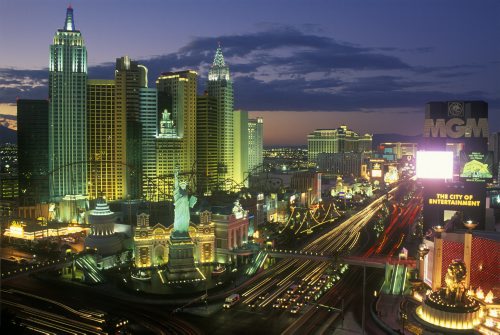
In old-school Vegas, resorts are hedging their bets and
renting out Quality Inn-style rooms at flophouse prices
COLIN FREEZE
Globe & Mail
March 21, 2009
Maybe the Roman statues inside Caesars Palace seeped into my subconscious. Maybe I just played cards too long. Either way, I left Las Vegas convinced I had won a remarkable insight into human history.
Gambling speeds the decline of empire. Nothing is clearer. This came to me like an epiphany after I busted out of an all-night poker game a few weeks back. Leaving the cards and green felt behind, and walking past some square-jawed marble centurions in the nearly empty casino, I remembered something from Catholic school. When Christ was crucified, Roman guards — not unlike the effigies I was seeing — cast lots for his coat. Confronted with one of history's great tipping points, an empire-ending event right in front of their noses, they ignored it. They put their heads down — and rolled the dice.
There's something telling in that. Gambling is simple, seductively short-term. Empires are complex, and play out over decades, centuries even. Still, there's a nexus, and if you've got an imagination, gambling through Vegas today can be like walking through history. On the skyline, pyramids bump up into Parthenons; the Eiffel Tower looms over the Statue of Liberty. Casino-resorts erected these gaudy simulacrums to draw visitors to the Las Vegas Strip, four miles of the world's most concentrated gambling action.
Now, however, the financial crisis is sucking the life out of the city, and it's like all these empires are dying all over again.
Everyone knows how America's great economic epicentres are suffering, after rampant real-estate speculation — society-sanctioned gambling, really — spawned a global financial meltdown. But forget Detroit. Leave aside Wall Street. Spare a thought for Sin City.
"What happens in Vegas, stays in Vegas," the slogan goes. These days, what's happening is grim: Gaming revenues are down. Casino stocks and real-estate have plummeted too. Potential tourists are far more preoccupied with figuring out how to pay their mortgages than with heading to Vegas to arrange trysts.
The upside is that in this crisis lies opportunity. Supposing you still have any income left to dispose of, there's never been a better time to go: Vegas might be at its most affordable ever.
Trust me — I'm a compulsive gambler. I know. The flight was cheap, the hotel rooms cheaper. The casinos, competing for ever-scarcer dollars, were offering all kinds of deals. I hit just about every one.
The airport arrival area, though, almost fooled me. There was a half-hour lineup for a taxi, so at first it seemed like times were still flush. But LAS's development has always lagged behind the casino-resorts, which really tell the tale of the city's fortunes.
A couple of miles from the airport and up the Strip, the lower- to middle-end resorts are renting out rooms at flophouse prices: $25 to $55 for a weeknight. Don't be put off by this — sleeping at, say, a Bally's or the Stratosphere is akin to what you might find in a Quality Inn.
The rates are so low because the hotels bet they'll make their money back on their casino floors and restaurants, and when they jack up the prices on the weekend. They give out coupon books meant to induce guests not to stray. But nothing, of course, precludes you from leaving cheap lodgings to see the swankier places up the Strip.
It's inside the litter of newborn casino-resorts, the still-$200-a-night places, that you find garish opulence and witness the bloom coming off the rose. Before hitting the casino floors, you're greeted by rows of empty Prada, Gucci and Louis Vuitton stores — and window shoppers too intimidated to venture in.
"Where are all the high rollers?" you begin to wonder.
Questions like this can shatter Vegas's bluff. The illusion of conspicuous consumption is essential to the enterprise. Without it, the whole city starts to look as suspect as the sequined décolletage of certain cocktail waitresses. Sure, it's appealing at first — then it just seems freakish, as it dawns on you that behind the glitz and sparkles, everything's been built up way bigger than what the natural order would support.
A security guard at the Bellagio brought this home for me. When I stopped to ask him some questions, he ended up giving me a half-hour rundown on the billion-dollar casino-resort. It wasn't like he had much else to do.
Long story short, he said the Bellagio used to be packed all the time, to the point where three other guards were watching the same stretch of hallway. Now, he works it by himself.
But don't cry for the Bellagio. Of all the casinos, it should do fine. Outside, its dancing fountains astound. Inside, its poker room bustles, with card sharks lining up to play games you have never heard of.
I'm a Texas Hold 'Em specialist, so when I heard mention of "Badugi" at the Bellagio, I figured someone ordered a Korean entree. The big-money players the next table over set me straight: It's a low-card poker variant — and don't even think about sitting down with less than $10,000. Looking at the couple of hundred dollars I had stacked in front of me, I decided to stay far away.
The Bellagio is friendly to all gamblers, but it still draws the dwindling ranks of the high rollers. Some canny investments it has made over the years have helped. Take the multimillion-dollar stage it built for Cirque du Soleil's O. Seven dozen of the world's best contortionists, synchronized swimmers and acrobats do amazing things on a platform that's sometimes solid, sometimes water. Even at $300 for a pair of tickets, you leave feeling you got the better end of the bargain.
But here's the rub. More than a half-dozen Cirque shows and even a couple of knockoffs are playing at casinos around town, some to mixed reviews. They've proven such a draw that Cirque's founder, the Quebec-born street performer (and now billionaire poker player) Guy Laliberté, is credited with almost single-handedly revitalizing Vegas over the past 20 years. But now that the concept is more of a Vegas fixture than sequin shows and foul-mouthed comedians, you have to wonder about its shelf life.
That there are so many shows in the same vein here is telling. Vegas impresarios double down on their bets as casually as the punters playing $3 blackjack at old-school casinos such as Circus Circus. It's a strategy that works out great when you're on a run — but you can easily lose your whole stack when your luck ends.
Consider Steve Wynn, the casino magnate who built the Bellagio, had a falling out with the owners and then tried to one-up it. His glamorous (if immodest) namesake resort — Wynn — was built for a couple of billion and opened in 2005. It's onyx-black outside and gorgeous, bright red everything inside. Don't miss it. It is tastefully grand.
But Mr. Wynn was so enamoured of his project that last year he opened a carbon copy casino next door. It's called Encore and it seems so superfluous that maybe it should have been called the Deja Vu.
It's not bad for the tourists: You can play table games for $10 a hand at the Encore, compared to the identical tables that start at $50 at the Wynn. But after a couple of hours of cards at the Encore, I left wondering if my $5 in losses were really going to help Mr. Wynn pay for his sparkling new resorts.
The tough times mean that investors, once bullish on Vegas's future, now bet on bleak. A share of most of any of the major casino corporations would have cost you close to a black chip — $100 — a couple of years ago. Now the same companies trade for a handful of white $1 chips. And yet somehow, as stocks head down, the Strip's skyline keeps going up. Crane operators, fuelled by inertia, slowly work away at new high-rises and luxury condos — even though many buyers, including Hollywood celebrities, are running away from their real-estate investments.
Developers put on a brave face. MGM Mirage, one of the suffering casino corporations, has just announced it's taking reservations for new luxury suites to open this fall — with rates to range from $150 to $2,000 a night.
That'll be good money if MGM can get it. Then, again, the company has also just announced a construction flaw is leading it to cut another planned tower in half. Effectively, MGM lopped 49 storeys into 28 faster than one of its peevish Pai Gow dealers cut down my chip stack — but this could be a blessing in disguise for MGM, since luxury condos aren't moving anyway.
The overbuilding of Vegas is worrisome for the aging casinos. Employee anxiety is palpable in some. One blackjack dealer at a 1950s-era resort — once home to the Rat Pack, now home to a $7 buffet — kept pausing to ask me how business was in the other places I had been hitting. You know, just in case she ended up needing a new job somewhere else.
You can't blame the locals for feeling antsy. Half the city's homes are worth less than what's owed on them. Fortune magazine reports that Vegas has edged Detroit as America's most abandoned city. So stick to the tourist traps, because the planned opulence doesn't extend very far from the Strip. If the casinos get to be too much, you can consider spending $200 to $300 and a full day on a bus trip to the Grand Canyon and the Hoover Dam, or blow $500 for a chopper ride if you're feeling flush.
But for me, there's nothing on Earth more grand than peeling the corners of cards off of green felt, and peeking at pocket aces that nobody else at the Hold 'Em table knows you have. And I find the best poker rooms are still downtown, not far from the strip, a $10 cab ride — or $3 on the bus known as "The Deuce." The appeal of the so-called "Fremont Street Experience" is really in what's been subtracted from the strip. There are no mini-Romes, mini-Parises, or mini-New Yorks in sight.
Instead you get 1950s-era casinos where the action really started, places that never aspired to be anything more than the garish and slightly seedy casinos that they are. This is vintage Vegas at its best — cards, coins and cash.
The Golden Nugget hosts the most relaxed poker room in town, putting the fun back into a game that too many players regard as a profession. Stick around long enough and you might see a real Vegas character, "The Duke." The rake-thin card player daily puts on his cowboy hat, heads downtown, and plops $10,000 cash onto tables where everyone else has bought in for $200.
And then, he never bets a hand. No one knows why.
Across the street, Binion's is where they used to hold the World Series of Poker. It's seen better days, but I'll always have a soft spot for it: It's where I beat 120 poker rivals in a tournament to claim $2,500. The money was great. But it was a real bonus to win in a place where the greats elevated cards into an art form.
Pictures of the legends at their peak are mounted on the walls. Some are of Doyle Brunson, a 10-time world champion from Texas, still going strong today in his 70s. More cautionary are the portraits of Stu Unger, a pipsqueak of a cocaine fiend fromNew York, who became a three-time world champion before he was found dead in a Vegas flophouse in his early 40s.
So many gamblers have come to Vegas to make their fortune. So many others have lost a lot more than money. The city has manufactured countless legends, and makes more every day.
There may be some longevity to this enterprise. After all, it has been more than a half-century since colossal casinos started popping up like incandescent weeds in the desert, decades since gangsters headed west to build the first gambling halls, placing huge bets on their ability to capitalize on a simple idea.
Given human nature, servicing greed will always be a growth industry. As empires rise and fall, you can bet there's something permanent in that instinct.
Pack your bags
GETTING THERE
Westjet and Air Canada offer direct flights from Canadian airports to McCarran International.
WHERE TO STAY
THE BELLAGIO 3600 Las Vegas Blvd. S.; 888-987-6667; www.bellagio.com. From $173 $139.
THE WYNN 3331 Las Vegas Blvd. S.; 888-320-7123; www.wynnlasvegas.com. From $247.
BINION'S 128 E. Fremont St.; 1-800-937-6537; www.binions.com.
GOLDEN NUGGET 129 E. Fremont St.; 800-846-5336; www.goldennugget.com. From $129.
THE STRATOSPHERE 2000 Las Vegas Blvd. S.; 1-800-998-6937; www.stratospherehotel.com. From $65.
WHAT TO DO
Cirque Du Soleil's O At the Bellagio; www.cirquedusoleil.com. Tickets from $186.
VEGAS NUMBERS
$0 Price of a drink (not including tip) for players in most casinos (all figures U.S.)
$3 Cheapest blackjack tables at Circus Circus, a 1960s-era casino
$35 Cheapest weekday accommodation at the Tropicana, built in the 1950s
$139 Cheapest weekday accommodation at the Bellagio, built in the 1990s
$11,600,000,000 Annual Nevada casino revenue in 2008
$12,800,000,000 Annual Nevada casino revenue in 2007
$951,500 Earmark for a "Sustainable Las Vegas" in the Obama "bailout budget"
***********************************
Editors Note: Book your hotel on line and save a Bundle
Click here for Hotel Deals on our Vegas Travel Page

|
Check The deals for these hotels
Are Croatia, Vegas or Laos on your list? They should be
Dec 27, 2008
It's not exactly a tough job to read travel books and magazines and chat with industry types about travel trends for 2009. But it does take time.
Based on the purchase of a good hundred dollars worth of travel magazines (thanks, boss) and the perusal of dozens of stories in newspapers and websites, as well as a few conversations with the experts, here is your loyal travel editor's unofficially official list of places GTA folks will be going in 2009. Or, in a couple cases, should be going. Happy trails!
1 Toronto. Hey, you can save a lot of dough by staying home. Try renting a bike on the islands for the day next summer or even stay the night at a B and B. You can sample incredible dim sum in Scarborough or live la dolce vita on College Street. Farther north, check out the Central American lunch spots on St. Clair Ave. W. Concierge.com recently put Toronto on its "it list" of top destinations for the coming year.
2 Quebec. You can take in Montreal or Quebec City with an easy drive. Or continue a little farther up river to the tasty Charlevoix region, with great golf, a lovely arts community and rolling, pastoral scenery. The big anniversary party was last year, so the crowds should be down a bit.
3 Florida. Complain all you like about early-bird specials in the land of endless malls, as Blue Rodeo once described the Sunshine State, but it's still the cheapest place around for a somewhat-guaranteed sun holiday. I've always loved the slightly funky main street in Dunedin, as well as the beach at nearby Caladesi Island. The Breakers is a stunning property north of Miami.
4 British Columbia. With the Olympics coming to town, there's a big push for tourists to take in the delights of Vancouver and Whistler in the summer. Try one of the great hikes on the north shore for outstanding views of Vancouver, or stroll Jericho or Kitsilano Beach. The golf opportunities in the interior, especially around Kamloops, Kelowna and Vernon, are astounding. It's where Mike Weir hopes to open a new winery and a golf course of his own design.
5 New York. Some folks in the travel biz say there's never been a better time to visit the Big Apple. With the economy down south in a shambles, hotels are slashing rates. Try visiting in the spring, before it gets too hot. Pick up a cranberry-orange bagel (they're square) at any of the numerous Cosi restaurants, then find a nice park to drink your morning coffee. I love breakfast or lunch at Bryant Park behind the library, and the farmers' market at Union Square is always a nice way to escape from the bustle and hustle of Manhattan.
6 Dominican Republic. If the resorts at Cap Cana (I had a chance to visit in May) are any indication, the DR has left its cheap and cheerful days long behind. The food is, for the most part, exquisite, the beaches are long and lovely, and the accommodations are first-rate.
7 South and Central America. Expect to see more stories about Peru, Chile (great wines) and even Paraguay, as well as Honduras and Guatemala as they seek to capitalize on Costa Rica's success. Cartagena, Colombia, is considered by some to be the new Buenos Aires. Then again, 50 is the new 60 and, according to the Blue Jays, fourth place is the new first.
8 Scotland. It's the year of homecoming in the land of Robbie Burns, so expect to see lots of treks to Edinburgh and Glasgow and both sets of Hebrides. Personally, I'd love to traipse over the Mull of Kintyre with Paul McCartney ringing in my iPod. But that's just me.
9 Croatia. It's interesting to see a place that wasn't on many people's lists 10 years ago surge so high up the charts. Look for new resorts away from busy spots like Hvar to take off. And look for folks to seek out similar scenery in Montenegro to the south and to Slovenia in the north, which is sandwiched between Italy and Croatia but offers some lovely coastal and mountain scenery in a small package.
10 Australia. Big movies often have a way of shipping more tourists to a particular destination. A few years ago it was the Lord of the Rings push for New Zealand (which could happen again if they ever make The Hobbit movie). This time, Hugh Jackman and Nicole Kidman's Australia should push up the tourism numbers down under, although the early reviews were rather tepid.
11 China. Michael Phelps and Ussain Bolt are gone, but the Bird's Nest stadium and the Water Cube remain. The people are lovely, there's tons of upscale shopping in Beijing, and you simply can't beat a walk on the Great Wall of China. A ride down the hill from the bottom of the wall on a plastic sled is tons of fun for even the most jaded sports writer. Faced with huge economic problems at home, the government of China is encouraging its citizens to travel to Hong Kong and drop some cash in the hotels, restaurants, night clubs and posh shops from Stanley to Kowloon.
12 North Africa. Tunisia is getting great reviews for its architecture, friendly people and seaside resorts. Ditto for Morocco. And folks also are flocking to Egypt for the variety of cultural and architectural riches.
13 Istanbul. It makes a lot of lists for its intriguing mix of west and east. There are increasingly trendy neighbourhoods like Besiktas, and the Blue Mosque is one of the stunning sights of the world. Take a water taxi across the Bosporus to Asia, or haggle for bargains in the markets. Turkey is not on the Euro so you can save a bit of cash.
14 Zurich. This is a stately city during the day but a pretty wild place at night, with lovely architecture, old-world hotels and lakefront promenades. Switzerland is famous for its mountains, chocolates and watches, but there's plenty to like about its cities.
15 Portugal. It's said to be one of the few remaining "bargains" in western Europe. Great wines, outstanding seafood, cafés galore and golf, too.
16 Lesser-known islands. The Maldives are hot. Ditto for the Seychelles, Sardinia and the isles off the coast of Belize in Central America. The Hawaiian island of Lanai has unbelievable resorts and great golf. A little too high-end? Try a weekend trip to Manitoulin. There are no palm trees, but experts in these things claim it's one of the great places in southern Ontario to see the night sky in all its glory.
17 Vegas. It's not my cup of English Breakfast, but the shows are allegedly great, the hotel and dining options too numerous to mention. There are exploding volcanoes, fake Eiffel Towers, the Cirque du Soleil, Céline Dion (hey, no city's perfect) and more opportunities to lose your money than you can imagine. The deals are better than ever.
18 Southeast Asia. Laos shows every indication of following in Vietnam and Thailand's footsteps, transitioning from relative isolation (at least from the West) to welcoming destination. If Myanmar ever follows suit, you will have to wonder if there are any frontiers left.
19 South Africa. The World Cup madness comes in 2010, so now's the time to check out the scenery, wines and wild animals in one of the most fascinating countries in the world.
20 Chicago and Washington, D.C. Look for all sorts of events tied to a brush with the next president of the United States. Barack Obama has lived in Chicago the last few years and is taking up full-time residence in Washington, where a huge crowd is expected for the Jan. 20 inauguration.
|
Top 39 Caribbean Destinations
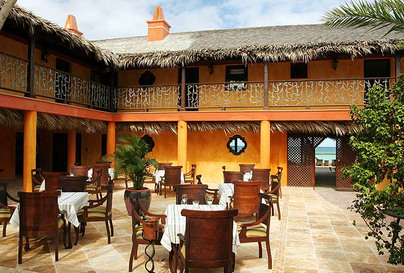
Upscale hotels, family resorts and culinary creativity make the Caribbean a great place to get away from it all
Nov 22, 2008
Austin Considine
Special to the Star
This hasn’t been a great year so far for the Caribbean tourism industry. Seven named hurricanes have hit the region this fall, an earthquake registering 6.1 rocked parts of Puerto Rico, the U.S. Virgin Islands and the British Virgin Islands, and the global financial meltdown has made people increasingly skittish about taking a vacation this winter.
But with new hotels continuing to open, high-end resorts raising the bar on amenities, family-oriented getaways expanding their offerings and talented chefs starting restaurants that are transforming the region’s culinary scene, there are plenty of reasons for vacationers to seek some solace in the sand and surf of the Caribbean this winter.
1. Anguilla, already the home of famed upscale resorts like Cap Juluca and CuisinArt, gets yet another big-name player in April when the Kor Group, whose Viceroy brand has planted its flag in places like Palm Springs, South Beach and the Riviera Maya, officially opens the Viceroy Anguilla, (800-357-1930.)
Rooms start at $550 (U.S.) a night. (Unless otherwise noted, all prices quoted here are U.S. for double occupancy and for low season.)
2. Does that sound too posh for you? Then, for a bit of old-school-style Anguilla flavor, check out the new Elvis Beach Bar (264-476-0101), a Class C racing sailboat that in 2007 was converted into a bar and restaurant, and features live music every weekend.
3. The neighbouring islands of Antigua and Barbuda have been in the midst of a tourism boom. Among the additions to the local scene are a major expansion of Sandals Antigua Caribbean Village and the opening of the Lighthouse Bay Resort (888-836-5427), on the pink sands of Barbuda’s Palm Beach, a narrow sandbar just off the mainland. Rooms start at $679, with all meals included.
4. On the southeast coast of Antigua, St. James’ Club and Villas opened its Mamora Bay Divers scuba centre (1-800-345-0356) last spring, giving guests of the secluded, 40-hectare resort a chance to explore the marine life teeming around the reefs and shipwrecks off the coast. Dive packages start at $75, with equipment rental.
5. The Bob Marley legend may have been born in Jamaica, but it lives on in the Bahamas at the Marley Resort and Spa (242-702-2800), which was opened on Nassau Island in July by members of the Marley family. It has 16 luxury villas, an organic produce restaurant and an extensive spa. Rooms start at $450.
6. On Paradise Island, the Atlantis resort (888-877-7525) unveiled a 497-room tower, Reef Atlantis, last December, and continues to burnish its eco-friendly reputation with the expansion of its Blue Tourism project: a collaborative effort aimed at studying and conserving natural reef habitats. Rooms at the tower start at $340 a night, with $10 from each booking going toward the conservation program.
7. Bigger is better seems to be the philosophy of the Divi Aruba Phoenix Beach Resort (800-367-3484;), in the Palm Beach area of Aruba, which is more than doubling the size of its resort. It is adding a new complex of accommodation, restaurants, pools and landscaped grounds, giving it the largest room count on the island. Rooms in the new complex start at $350.
8. St. Lucia continues to attract developers looking to expand on the high-end of the market. The latest arrival: Cap Maison, (44-208-812-4734 ), offering 50 luxury rooms and 22 private residences atop a seaside cliff in Cap Estate, overlooking a secluded beach. Rooms start at around $405 a night.
9. Visitors to Aruba also have a couple of new dining options. The 325-seat beachfront restaurant La Vista, at the Aruba Marriott Resort and Stellaris Casino (297-586-9000), features contemporary Italian fusion cuisine; and at the Old Man and the Sea (297-735-0840), in Savaneta, you can enjoy the catch of the day right on the beach or in a private dining room at the end of the pier.
10. Long a playground for the rich and famous, Barbados continues to build upon and enhance its luxury offerings. The legendary Sandy Lane (866-444-4080), a resort known for its celebrity clientele and for rates that start at $1,000 a night, has upgraded (if that’s possible) in the off-season, with the renovation of the Bajan Blue restaurant - with a different theme every evening - and of its spa.
11. But what if you aren’t Mick Jagger? Or even K-Fed? Try the Settlers’ Beach Hotel (246-422-3052), which just opened a beachside Italian restaurant and bar in February, Spago. Rooms at the hotel start at slightly less than those at Sandy Lane, at $134 a night.
12. Also on Barbados, the 267-room Almond Casuarina Beach Resort (246-620-3600), an eco-friendly resort that uses solar power, opened in May on Maxwell Beach after having been bought and rebuilt by Almond Resorts. The refurbishments include 100 new rooms, new restaurants and new pools. Rooms start at $450 a night, with specials available through much of December.
13. Coming to Grand Cayman, on West Bay, is Lighthouse Point (345-946-5658), another environmentally friendly resort that hopes to generate 17,000 watts of its own power daily. Condos and rentals are scheduled to open in March, starting at $2,800 a week.
14. Bay Streeters who still have a job in 2009 might want to celebrate in Virgin Gorda, at the new Aquamare Villas (787-61-2638), a tiny, three-villa cluster on Mahoe Bay. Each beachfront villa is 8,000 square feet, with three master bedrooms. As one might expect, such opulence doesn’t come cheap. ``Discounted” introductory rates are available until Dec. 15: $12,500 a week. They jump to $25,000 a week during the holidays
15. Known above all for its rusticity, Dominica’s newest developments are characteristically nature-oriented and eco-minded. On the luxury end, opening in late January is Rosalie Bay - A Nature Resort (767-440-4439). The 28-room boutique property is on a nine-hectare plot along a black-sand beach that is a “prime nesting area” for endangered turtles, the hotel says. Introductory rates for the new resort start at $200 a room until June 1, when turtle nesting season begins, and rates go up to $250.
16. Also on Dominica, Sea Cliff Cottages (613-756-3116) has opened the fifth of its quaint, seriously affordable cottages perched on a cliff overlooking the beaches of Hodges Bay. Off-peak rates for a studio cottage start at $70 a night and increase to a whopping $90 a night during the winter season.
17. Change has been coming to the Dominican Republic in recent years. First, five-star resorts transformed this longtime budget getaway; now, it is the “resort within a resort” concept, giving guests a sense of seclusion - often with private pools and restaurants while still offering all the resources of a bigger resort. Tiara, at the Club Med Punta Cana (809-686-5500 ) on the easternmost tip of the island is among them, a development geared toward families, offering a cluster of 32 spacious oceanfront suites and a private infinity pool and bar. Opened in May, it is part of a $34-million makeover that also includes a full service spa; an upgraded, more healthful menu; and a new mini-water park and upgraded skate park. Suites at the Tiara start at $3,010 for a seven-night stay, and including dining, drinks and activities.
18. Also in Punta Cana, look for the Moon Palace Casino, Golf and Spa Resort (800-635-1836 ), opening in two phases in 2009, the first in January. When completed, it looks to be the largest resort in Punta Cana, with 2,103 rooms, with rates from $466 a night.
19. Eco-tourists may want to check out the Cayman Diving Lodge (800-852-3483), on the east end of Grand Cayman Island, which is set to open in March, and which management is claiming will be the first totally green building in the Grand Caymans. Built of recycled materials and powered by solar panels and a wind turbine, the lodge’s dive facilities are complemented by 12 rooms and 12 condos. Prices are not yet set.
20. The British developer Peter de Savary is calling Grenada the new St. Tropez - in no small part because of the millions he is pouring into developing several properties on that famously rustic island. Among them is Mount Cinnamon, (866-720-2616), which opened last March on Grand Anse Beach. The resort climbs a quiet hillside that overlooks the sea and features an extensive spa, steeped in traditional West Indian remedies. Rooms start at $500.
21. Also, on Grenada, an old favorite is back. LaSource (888-527-0044) has reopened this year after years of reconstruction following the wreckage caused by Hurricane Ivan in 2004. Set on Pink Gin Beach on the island’s southwestern tip, the resort offers a relaxing atmosphere (no children under 16 are admitted most of the year), with room rates starting at $315 per person, including daily spa treatments and a host of outdoor activities.
22. The intimate, nine-room Villa St. Pierre (596-596-786-845 ) is a recent addition to Martinique’s hotel scene, having opened just last month in the heart of historic St.-Pierre, which in 1902 was destroyed by the eruption of nearby Mount Pelee. Also coming to Martinique: Cap Macabou (596-596-742-424), a so-called “hotel de charme,” with 44 rooms, set to open this month.
23. Although Guadeloupe won’t see much in the way of new accommodations this year, several established locations have undergone renovations for the coming season, as the island continues to modernize. Notable examples include the Blue Season Hotel Fleur D’Epee (590-5-904-000), which recently renovated all its rooms and reconstructed its diving center.
24. Jamaica is experiencing staggering growth, with a bevy of new developments, particularly at the higher end, bringing hundreds of new rooms to the island. And just when you thought it couldn’t get any more extravagant, it did. On a lagoon near Port Antonio, Kanopi House, sister property to the posh Kamalame in the Bahamas, opens Dec. 12, with 10-person-maximum suites running $5,000 a night.
25. Also on Jamaica, Iberostar Hotels and Resorts (876-680-0000), a Spanish resort chain, opened the first phase of its Rose Hall complex in Montego Bay in 2007, recently completed Phase 2 and expects to complete Phase 3 this month, bringing the total number of its rooms to 978. Rates start at $110 a person a night.
26. On the north shore of Jamaica, about 25 miles from Montego Bay near Lucea, two Grand Palladium resorts (876-620-0000) - both claiming five stars, but relatively affordable - opened in July: the Grand Palladium Jamaica Resort and Spa, and the Grand Palladium Lady Hamilton Resort and Spa. Rooms for each start at around $200 a night.
27. With just six rooms (each of which can accommodate four guests), the no-frills, beachside Coral Paradise Resort (877-267-2572) on Bonaire, is surely an antidote to the big-resort trend sweeping the rest of the Caribbean. But the resort, which opened in April, doesn’t stint on service, offering 24-hour shore-dive access, daily boat dives and next-door proximity to the popular Captain Don’s Habitat diving center. At $160 a night for two guests (and $35 for each extra person in a room) in peak season, it’s also eminently affordable.
28. On Curacao, the largest of the Netherlands Antilles, the Renaissance Curacao Resort and Casino (599-9-435-5000 ) is set to open Dec. 1 in Willemstad, making it one of the first full-service resorts to appear on Curacao since the early 1990s. The Renaissance sits on the waterfront at the 19th-century Rif Fort, which is part of a UNESCO World Heritage site. Rooms start at $267.
29. Families thinking about a vacation in Puerto Rico this winter might want to check out the new Coqui Water Park at El Conquistador Resort and Golden Door Spa (866-317-8932), part of a $110 million renovation that was completed last February.
30. Just east of Old San Juan, in the beachside community of Condado, Puerto Rica, La Concha, a Renaissance Resort (787-721-7500), reopened late last year after years of restoration and $220 million in reinvestment. The hotel, which first opened in 1958, has retained its trademark seashell-shaped restaurant, designed by Mario Salvatori.
31. Originally scheduled to open last summer, the Radisson St. Martin Resort (888-201-1718) is now set to open on Dec. 8 on the secluded beach cove of Anse Marcel, on the French side of the island. With 63 suites and 189 rooms, the resort will feature a beachfront restaurant, a tapas bar in the lobby and a 150-slip marina. Rooms start at limited introductory rates from 309 euros, about $393 at $1.30 to the euro.
32. On St. Kitts, the Beach House Restaurant (869-469-5299) ramps up the luxury quotient on the local dining scene, offering panoramic views of Nevis, and a kitchen headed by George Reid, of Cap Juluca fame.
33. On St. John, stop in for a bite at the new St. John Waterfront Bistro (340-777-7755), on Cruz Bay beach. Opened last February, this French-Caribbean hybrid offers items like poached Caribbean lobster tail with tomato-fennel broth, roasted sweet corn, leeks, crispy garlic and creamy white corn polenta.
34. Also on St. Lucia, Calabash Cove Resort and Spa (758-456-3500) opens its doors next month, offering oceanside accommodations at Mason Point overlooking Bonaire Bay. Rooms start at $295.
35. Usually a safe bet during hurricane season, parts of the Turks and Caicos were hit hard by Hurricane Ike this summer. But the vast majority of the country’s resorts and most popular beaches received just a few bumps and bruises, and the damage was cleaned up quickly. Not only are the resorts on track, there are several new offerings this year - unsurprising, given the island’s meteoric rise as a hot vacation spot. Among them: the Grace Bay Club, which in February is opening the Estate (649-946-8323), a group of 22 residences, as part of its $250 million expansion and renovation; the 22-acre Seven Stars Resort (866-570-7777) on Grace Bay beach, which opened in July; and the Nikki Beach Resort (649-941-3747), a 432-acre gated resort that opened in April and that now includes the Turks and Caicos Yacht Club Marina, able to accommodate megayachts, with 110 slips.
36. Due to open in January at the Beaches Turks and Caicos (649-946-8000) is the $125 million Italian Village. It features 162 luxury family suites and a renovated 45,000-square-foot waterpark.
37. Well-heeled travelers have long considered St. Barts their winter playground, with a popular getaway being the 14-room Carl Gustaf Hotel (590-590-29-79-00), where a seven-room villa can go for as much as 48,000 euros a night. This December, this swank hotel is opening a new restaurant, Victoria’s, headed up by Emmanuel Motte, who plans to infuse his traditional French cuisine with Caribbean and lighter Asian fare. The hotel has also completely refurbished its popular Carl Gustaf Lounge and added a new Boutique Spa by Carita, created by the sisters behind the deluxe Carita spa in Paris.
38. On Tobago, the Bacolet Beach Club (868-639-2357), which opened in June, is being billed as an exclusive boutique with an Asian-Cuban restaurant. Rooms start at $190. Just a few minutes away, a multimillion-dollar expansion of Scarborough Jetty was completed last December, and it can now accommodate Voyager-class ships (which hold up to 3,114 passengers), and should raise Tobago’s profile as a vacation destination.
39. Despite the name, the Virgin Islands Campground (877-502-7225) on Water Island, just off Charlotte Amalie, is actually an affordable collection of eco-friendly, wood-frame-and-canvas cottages overlooking the sea. It is adding two cottages, for a total of seven, by Dec. 1, and plans to have 12 a year later. They use wind-generated electricity and have a solar-heated hot tub. Rates start at $75 a night.
New York Times News Service |
The results are in . . .your top five places to visit in Canada
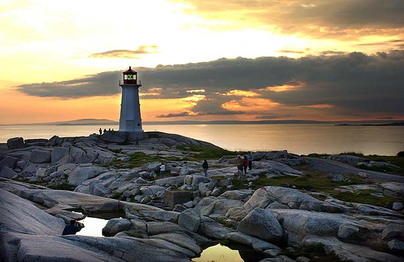
Historic cities and nature's wonders dominate in our reader survey on the top places to see in Canada and Ontario
Jim Byers
Travel Editor
The Big Nickel came up a little short. But so did Peggy's Cove and Stanley Park.
The results of our reader survey on your favourite places to visit in Canada and in Ontario didn't reveal any huge shockers, but there were a couple of surprises that might not go over so well out West.
Topping your list was Quebec City with 58 votes. Niagara Falls was next with 39 votes, followed by a big whack of places all jostling for a spot on the list.
We only asked for your top five choices in each category, but we've gone the extra kilometre here and are presenting the top 10 destinations in Ontario and the top 10 in the rest of Canada that you think folks should visit before making their final exit.
It looks as if some destinations lost out by getting separated. For instance, Stanley Park got eight votes, while Vancouver and Vancouver Island (which are clearly separate places, folks) got seven votes.
It's a little odd to see nothing west of the Rockies in the top 10. But don't worry; all it means is means Star readers can forget about getting their ticket requests approved for the Vancouver 2010 Winter Olympics. It's nothing serious, and west coasters hardly ever carry a grudge.
We seem to really like water in this country (Niagara Falls, the Bay of Fundy, Lake Louise, Lake Superior, Algonquin Park) as well as rocks and trees (Algonquin, Gatineau, Muskoka and Banff). Cities are okay, but only if they speak French or have really iconic towers (real ones, not telecommunications behemoths like Toronto's big beacon) and skating canals.
A few folks mentioned seeing Shakespeare in Stratford (how cultured), "a field of canola seed in the prairies" (how pastoral), Kensington Market (how multicultural) and even Yonge St. after a Maple Leafs playoff victory (how naïve).
Other suggestions were "all of Yonge St. from Captain John's to Rainy River" (gee, even including Mel Lastman Square?), Chez Clo in Montreal for tourtiere, "The Top of the World Highway – the back way into Dawson City via Chicken, Alaska" and, perhaps my favourite, "hitting the McDonald's in Perry (sic) Sound at 4 a.m. off the Greyhound."
Sounds like a Stompin' Tom title, doesn't it?
Anyway, thanks to everyone who contributed. And be sure to visit thestar.com/travel for our next survey. We want to find out the favourite place in the world – outside Canada – you visited in 2008 and what's on the top of your wish-list for 2009.
We also want to know if you'll be taking your normal winter vacation or pulling in the reins a bit because of the economy. Please go to thestar.com/travel and let us know where you're likely headed in 2009.
Top five Canada Destinations
1. Quebec City
2. Montreal
3. Lake Louise
4. Banff
5. Bay of Fundy
Honourable Mention: Cabot Trail, Rocky Mountains, Cape Breton, Drumheller Badlands and Royal Tyrell Museum, Peggy's Cove
Top five Ontario Destinations
1. Niagara Falls
2. Algonquin Park
3. Ottawa/Gatineau*
4. Niagara-on-the-Lake
5. Lake Superior
Honourable Mention: Killarney Park, Elora Gorge, Muskoka, Rideau Canal in winter, Thousand Islands, Ganonoque
|
Natural wonders of little-known Long Point
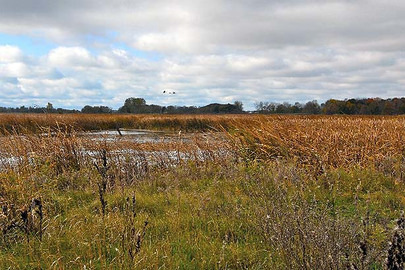
Birders and biologists delight as migratory flocks head south
Paul Gallant
Special to the Star
LONG POINT, Ont.–What makes the area around Lake Erie's Long Point so special is all the places you're not allowed to go.
The 40-kilometre spit of sand and marshes is the heart of the UNESCO-recognized biosphere in Norfolk County.
In the last few years, the region has taken off as an eco-tourist and cottager haven, partly because the peninsula's no-public-allowed protected areas have maintained and boosted the abundant wildlife around it.
In Long Point Bay and in the surrounding area, bird-watchers, recreational fishermen and hunters co-exist with relative ease because of the tremendous biodiversity.
A bike ride away, Port Rowan provides a quaint business hub. Its artsy Festival by the Bay on the weekend of Nov. 8 and 9 offers studio tours and dozens of artsy shopping opportunities.
"I came here for a month as a teenager to volunteer at the bird observatory and I was hooked," says Jody Allair, 30, who eventually moved back to work as project biologist and outreach co-ordinator at Bird Studies Canada (BSC).
The national organization is based in Port Rowan and operates several observation stations, including one open to the public on the causeway to Long Point.
"The birding, both migratory and native, is amazing. Places like this, with so much protected area, are few and far between," Allair says.
This time of year, it's the Northern Saw-whet Owl that's got Allair excited.
The size of a beer can (and the personality of a bank president, as author William Service once said), the birds fly through the area in flocks of hundreds. BSC workers and volunteers go out on cool, clear nights, play owl calls on a stereo system, catch the owls in nets, tag them and release them. (If you want to join in, call BSC at 888-448-2473 for details.)
Visitors can see all kinds of birds, turtles, snakes and frogs along the BSC trails through the marshes at the western end of the peninsula and, until mid-October, camp right behind the dramatic wind-swept dunes of the provincial park.
But the eastern end of Long Point is protected as a national wildlife area by the federal government. Visitors are not permitted except at the very tip, where there's a lighthouse, only reachable by boat.
The area between the provincial park and the wildlife reserve, about a third of the point, is owned by the Long Point Company, a private venture shrouded in mystery.
"Most people don't know much about Long Point and the Long Point Company and I'd like to keep it that way," says Frank Reid, 73, the treasurer of the company which owns 3,240 hectares of the peninsula. His is one of the names on the "keep out" signs warning strays off the private property. (In the summer, nudists make the provincial park beach just outside the fence their unofficial home.)
Reid's father and grandfather were treasurers before him, going back to 1910. But the company's history dates all the way back to 1866, when its founders bought the whole peninsula from the federal government for $8,540, later selling the eastern end back to the feds.
The company was created out of self-interest as much as preservation. Its founding members were avid hunters who wanted to keep the marshland pristine and protected from poachers and other wrong-doers.
In the early 1800s, the Point had developed "an unenviable reputation for drunkenness, murder and debauchery of every kind," writes historian Harry Barrett.
"Gamblers and others wishing to indulge in activities ... could readily reach the Point by steamboat or sailing schooner hired from Buffalo or Erie. Few officials followed them or could prove the lawbreaking if they did."
The 20 current company members are well-off, low profile and from all over North America; in addition to Reid, they employ four people year-round to maintain the grounds and the cluster of cabins the locals like to call "millionaire's island."
Most members only visit for a couple of weeks of hunting in the fall, maintaining the philosophy that "real conservation is non-use," says Reid.
"The company's efforts to protect the area has had huge spinoffs," says Allair.
"We owe them a lot. Our breakwater station on their property gives you a sense of what Southern Ontario would be like before cities and roads. With the waves crashing and the rare trees, it has a total wild feeling."
The UNESCO biosphere designation has encouraged Norfolk County to manage its growth wisely, which is tricky, since the decline of the tobacco industry has meant rapid change to the area's economy.
"The groups in the area are cognizant that this is a natural area, we know it's not going to be destroyed," says Cindy Vanderstar, who moved to Port Rowan three years ago.
She now runs a store, a bed and breakfast (The Coach House on Lake Erie, 519-586-2832) and is president of the local chamber of commerce. "It's still a laid-back, relaxed place."
Except, maybe, during the Festival by the Bay, where local stores are busier than at Christmas.
"It's a lot of women shopping is what it is," says Norm Stobbe, whose handmade bird houses, made out of reclaimed wood and salvaged bits of metal, will be available during the festival.
Though he's not a birder himself, he's provided homes for thousands of birds, sold by his wife Colleen at her store Shear Creations (519-586-3817, 431 Brock Ave., Port Rowan).
"I'm more of a hunter. November is the best time, I think. Last year I got 30 geese and got my limit of ducks," says Stobbe.
Paul Gallant is a Toronto-based freelance writer. |
Market tumbles have a silver lining for travellers
Faltering economy means deals are available
as vendors try to cut their losses
Oct 18, 2008 04:30 AM
Peter Gorrie
Special to the Star
What's the perfect antidote to the stress of the stock market's extreme roller-coaster ride and the threat of a recession?
A vacation, of course. Preferably one that lets you put your feet up, sip a drink and absorb a pristine beach and breeze-blown palms, or watch the sparkling ocean slip by as your ship glides through gentle waves.
The bad news and turmoil might even cut the cost of that respite. Travel agents and tour operators say there will be bargains as cruise lines, resorts and hotels try to ensure a downturn doesn't leave them stuck with empty cabins and rooms.
"It's going to be a challenging year for the industry," said Cathy Keefe, of the New York-based Travel Industry Association.
The impact of the economic uncertainty is not nearly as dramatic as the immediate and abrupt decline in travel after the 9/11 terrorist attacks. But it's lurking in the wings.
Travel to the Caribbean is down 10 per cent this fall, and advance bookings to the islands and Mexico are below normal, said Brian Simpson, general manager of Travelocity.ca. Companies that offer travel packages "need to get rid of the inventory they've booked in advance."
Most cruise companies and several airlines have already cut their fuel surcharges, or say they will. But that fee, while annoying, is a relatively small part of a holiday travel budget. The big news is reduced rates.
"I've booked people for Cuba today at $700 per person for a week," said Robert Townshend, president of Total Advantage Travel and Tours Inc. Simpson, and Allison Eaton, spokesperson for Flight Centre, confirmed three-star Cuba packages are available in January for $560 plus taxes.
The big worry for travel folks is that Americans, battered by the sub-prime mortgage crisis, the credit squeeze and job losses, will stay close to home. Signs of retrenchment are evident – 66 per cent of the respondents in a recent survey for Travelocity.ca said economic concerns would affect their holiday travel plans – even though most travel industry officials insist people attempt to preserve their vacation time no matter what it takes.
"It's going to affect business," says Carolyn Condon-Burns, of Carlson-Wagonlit Travel in Peterborough.
Cruise vacations might be among the biggest bargains, because Americans typically occupy three-quarters of ships' passenger lists, and most of the industry allows cancellations without penalty up to 70 says before departure.
"Cruise lines need to fill their ships, so they'll look to other markets for passengers," Condon-Burns said. At least one is offering free airfare to Florida for the second person in a couple; another, half off the full rate for the second passenger.
"I'd say that in January, compared to 2008, we're looking at 15 to 20 per cent lower."
For those travelling to the United States, with the exception of mainstays such as Disney, deals are available even in the high season. Resorts in Florida, Arizona, Las Vegas, California and Hawaii are offering upgrades or free nights with bookings at full rates; unusual for peak times. And bi-city hotels are cutting their rates, largely to counter a decline in corporate travel.
Still, industry people advise against waiting for bigger bargains since operators increasingly offer bonuses for early bookings and many choice spots are already gone.
|
A hikers haven in Beaver Valley
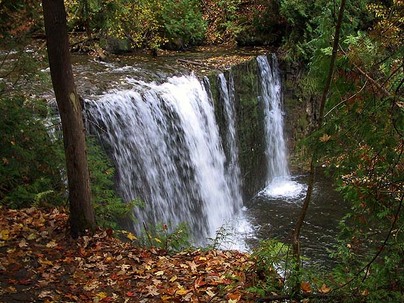
Hikers can revel in autumn glories of Beaver Valley along newly-opened route
Oct 16, 2008
Roberta Avery Special to the star
GREY HIGHLANDS, Ont. – The quest for the dream began with a handshake.
The dream was to link the two magnificent waterfalls of Hoggs and Eugenia and take the Bruce Trail over an optimum route identified in 1967 on the Niagara Escarpment, above the Beaver Valley.
For more than a decade, Bruce Trail members Chuck Grant and Eric Kiertinge had spent countless hours poring over maps trying to work out how the dream could be realized.
Finally, four years ago, a plan based on their efforts came together and a group of volunteers knocked on the door of a private landowner and asked permission for a section of the trail, near Flesherton, southwest of Collingwood, to cross the landowner's property.
The landowner agreed and the first handshake took place to cement the agreement and 14 different handshakes later, the Falling Water Trail has opened, just in time for the fall hiking season, when the Beaver Valley takes on a splendid mantle of fall colours.
Including loops and side trails, the Falling Water Trail stretches for 31 kilometres and offers dozens of vantage points to view the brilliant red and gold hues of the valley below.
At almost any point on the trail, the sound of rushing water can be heard.
There's the thunderous boom of the waterfall at Hoggs Falls near Flesherton and at Eugenia Falls and the pounding of the falls as it drops 30 metres.
Along the rest of the routes there's the babbling of gentle brooks and at least five more waterfalls with sounds ranging from a roar to a tinkle.
It's no wonder that this trail has received rave reviews from casual strollers and serious hikers alike.
"Collective achievement," explains Jack Morgan, the Beaver Valley club's Land Securement and Trail Development Director.
"A lot of people have worked very hard to make this happen."
But like access to much of the 1,200 kilometres of paths, which follow the Niagara Escarpment from Queenston to Tobermory to form the Bruce Trail, it wouldn't have happened without the handshake agreements with the private landowners.
"Getting permission for the trail to cross private land is always the hard part ... we depend on the generosity of private landowners who allow the trail to cross their land on a handshake agreement," says Morgan.
Not easy to achieve in these days of concerns about public liability, but remarkably 15 landowners have shaken hands on agreements that allow thousands of hikers to enjoy the Falling Water Trail and cross their properties.
Access to the balance of the route has been gained by partnering with Ontario Heritage Trust to purchase 125 hectares of prime property at a cost of $1.1-million and taking the trail through properties owned by the Grey Sauble Conservation Authority, the Ministry of Natural Resources and along unopened municipal road allowances. Having acquired the access to the optimum route, the real work began, says Morgan.
Hundreds of volunteers picked up chain saws, branch loppers and shovels and headed out into the woods to create a trail.
"We don't ever cut down trees, we take the route around them. But we do cut down dead trees or cut them up when they've fallen across the trail," says Morgan.
Where the trail crosses meadows, two volunteers dragged a giant machine that's a cross between a mower and an edge trimmer to cut a swath through the deep grass.
Where the trail crosses water, which it does a lot on this path, bridges or boardwalks were built, or giant rocks hauled in to form stepping stones, and where the trail crosses fence lines, stiles were constructed.
The most popular section of trail will likely be the seven kilometres between Hoggs and Eugenia Falls. If you are planning to hike both ways, it's best to start at Hoggs Falls and climb up toward Eugenia, so the uphill section is done first.
Roberta Avery is a freelance writer based in Meaford, Ontario.
*********************
Your place in the sun
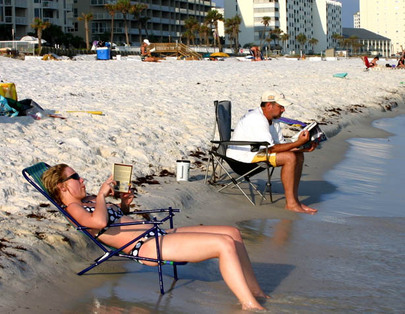
September 27, 2008
Click on each section to be taken to the article.
A second home doesn't always mean a cottage up north. More and more Canadians are exploring the option of buying a slice of real estate under the sun down south. Some of the options are surprisingly affordable.
Florida: Housing to fit all pocketbooks
There are bargains galore south of the border these days. Just ask a pair of snowbirds from Halton Hills who bought a house for $19,000 after discovering the Florida phenomenon of manufactured homes. And you don't even need to go to a real estate agent to buy one. (Click here)
Mexican getaway homes
At one time, buying beachfront property in Mexico was almost impossible for foreigners. But no more. Low property taxes and a low cost of living make Mexico an attractive getaway. And then, of course, there's the climate. (Click here)
Arizona: Bridge over desert waters
In the middle of the Mojave Desert sits Lake Havasu, a Mecca for swimmers, anglers and even surfers. And, if that's not enough, they have the original London Bridge. The area welcomes about 3.5 million visitors a year, many of them Canadian. And some of those Canadians like it so much, they buy property in Arizona's Lake Havasu City. (Click here)
Hidden gems in Hawaii
Alex Gray didn't look to the Toronto waterfront, up-and-coming Liberty Village or glitzy Yorkville when was in the market for a condo recently. He looked to the white sand beaches and lush tropical landscape of Maui. (Click here)
Panama: Buying a little highrise paradise
Joy Bannister bought a condo while holidaying in Panama two years ago. When she returned to Toronto, everyone told her that she was crazy. (Click here)
Gringo offers decor help
Anyone who has purchased a vacation or retirement home down south will tell you that buying is the easy part. But furnishing the place – now that's another thing altogether. (Click here)
Buying an island unto itself
Owning a private island might be the ultimate getaway fantasy. For those rich enough to indulge, there is a Toronto-based company that specializes in making that fantasy a reality. (Click here)
**************************************
10 reasons to travel ... in October
Sep 27, 2008 04:30 AM
1. Music in Amalfi
Amid the beauty of Italy's Amalfi coast, the curtain opens for choir music from all over the world. Cantus Angeli is the festival of music, art and culture. Oct. 22 to 26.
http://www.cantusangeli.com
2. Slow Food in Turin
The Salone Internazionale del Gusto is a food market and meeting place in Turin, Italy, where gastronomy meets ethical and social awareness. Oct. 23 to 27.
http://www.salonedelgusto.com
3. Ghostly Events
Salem, the picturesque town north
of Boston and site of the infamous Witch Trials of 1692, hosts the ultimate Halloween extravaganza. Haunted Happenings transforms
the historic seaport into a ghostly hotbed every day during October.
http://www.hauntedhappenings.org
4. Turkish Sailing Delight
Turkey has more than 8,000 kilometres of coastline, 127 blue-flag beaches, and twelve blue-flag marinas. The Bodrum Cup Sailing Regatta (Oct. 22 to 26) has become as much a cultural event as the place to see and be seen each fall on the stylish Turkish Riviera. http://www.bodrumcup.com
5. Treasures of Byzantium
Opening Oct. 25 at London's Royal Academy of Arts, Byzantium 330-1452 will highlight the splendours of the Byzantine Empire with some 300 objects including icons, wall paintings, micro-mosaics and precious metalwork.
http://www.royalacademy.org.uk
6. Joburg Pride
Some 30,000 spectators and participants are expected to be on hand Oct. 4 for Pride March, the original and largest of South Africa's Pride celebrations.
http://www.joburgpride.org
7. Pottery on Parade
The new enlarged Wedgewood
Museum opens Oct. 1 at Barlaston, in the heart of England. Thousands of priceless archives and rarities chart the full history of one of the world's best-known pottery manufacturers.
8. Drumheller Boo Tour
The Atlas Coal Mine National Historic Site, outside Drumheller, Alta., is haunted. On Oct. 24, 25 and 31 you can take a tour – if you dare. Not recommended for the faint of heart or anyone under nine. http://www.atlascoalmine.ab.ca
9. Houston Quilts
From Oct. 30 to Nov. 2, the "World's Fair of Quilts" takes over Houston's George Brown Convention Center. It's the world's largest quilt show, sale and quilt-making academy. http://www.quilts.com
10. Polar Bears in Churchill
Churchill, Man. is the polar bear capital of the world and October is the month to see these magnificent animals in their natural habitat.
www.destinationchurchill.com
***************************************
Check out Our new Dining pages

Click Above
Tastes of the World - Close & Far Away
|
******************************
Meaford Winery's
the apple of their eye

Coffin Ridge forerunner of emerging wine region around Georgian Bay
Jul 03, 2008
Roberta Avery
Special to the Star
MEAFORD, Ont. – In a community that's as down home as apple pie, it's a surprise to drive down a gravel road and trip across a chic new winery with all the sophistication of a California vineyard.
Meaford may be the apple capital of Ontario, but it's considered the "outer limits" of the Ontario Vintner Quality Alliance's designated wine regions. Yet, after successfully experimenting with some hardy varieties of grapes, Neil and Gwen Lamont opened Coffin Ridge winery here in early June.
The building itself has sleek lines emphasized by black and blood-red trim. Inside, the tasting room oozes sophistication – even in the bathroom where the black-and-red theme continues.
The name is equally dramatic. Legend has it that more than 100 years ago, pioneer pallbearers crossing the ridge dropped a coffin and the corpse rolled toward what is now the vineyard.
Gwen Lamont, a former psychotherapist with a knack for spotting a marketing opportunity, tied in the Coffin name with California winemaker Robert Mondavi's theory that winemaking breathes life into harvested grapes.
"The grapes die a natural death when they are picked and turning them into wine brings them back from the dead," says Gwen Lamont.
So, naturally, Coffin Ridge's signature wines go by the names Back from the Dead Red, Into the Light White and Resurrection Rose.
"Do you think the names are okay?" Gwen Lamont asks a group of ladies enjoying a glass of wine on the patio overlooking the blue waters of Georgian Bay.
"Perfect. I'll take a bottle of Back from the Dead Red next time I visit friends I haven't seen in years," says Jean Compton of Mississauga.
Coffin Ridge sells a glass of wine for $5 to $7 and, for $15, offers a vintner's plate – enough for two to share – pairing the wines with local artisan cheeses and breads.
Wine is also available by the bottle, but with an inventory of only 500 cases for the first year, Lamont fears they may run out before they close for the season in October.
"The response has been amazing," she says.
So far, about half of the 10-hectare vineyard has been planted, with geizenheim and frontenac. Winemaker Terry Rayner experimented to perfect the wine made from the hardy grapes brought in from Quebec and Ohio.
"You have to do things a little differently this far north," says Rayner.
The result has wine connoisseurs identifying Coffin Ridge as a winery to watch.
Coffin Ridge's 2007 riesling sur-lie is "bound to win many awards," says food and wine author Shari Darling. "This is one of the most unique, complex and interesting Ontario rieslings I've ever tasted."
While Coffin Ridge is the Southern Georgian Bay region's first winery to open to the public, others are also working hard to establish the area as a new wine region.
Third-generation apple grower John Ardiel has been growing grapes in the Town of the Blue Mountains since 1998. Ardiel has teamed with Collingwood wine marketer Robert Ketchin and sixth generation Niagara wine maker Murray Puddicombe and their Georgian Hills Vineyards is already producing wine that is available at local restaurants including Oliver & Bonacini at Blue Mountain and Collingwood's Café Chartreuse.
Georgian Hills plans to open a winery in 2010, but private tastings are currently available upon request, says Ketchin.
Tim Dixon, of Miami, Fla., owns land on the Bruce Peninsula which he hopes to turn into a vineyard so he contacted the Lamonts and offered to fly up to help with this year's planting.
"My property isn't much farther north than this, so it's very encouraging to see grape vines do so well here," he says as he plants in the Coffin Ridge vineyard.
Darling is enthusiastic about Coffin Ridge's location.
"Take a deep breath and count your blessings that we have such a lovely winery to visit in northern Ontario's cottage country," she says.
Robert Avery is a Meaford-based freelance writer.
**************************************
*********************
Motor City Magic
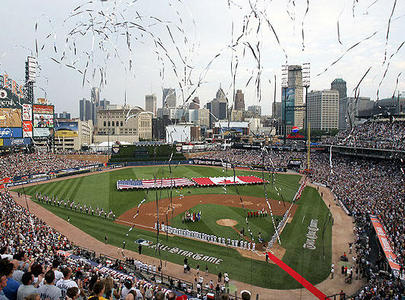
Detroit has taken some hits over the years, but it always seems to bounce back, thanks to its creative spirit and proud people
May 03, 2008 04:30 AM
Denise Balkissoon
Special to the Star
DETROIT, MICH.–Everybody in this storied border town has an opinion and a fierce local pride that they feel compelled to share.
It starts early on. As my cohort and I enter the U.S., a chatty customs agent regales us for a good 15 minutes on the techno talents of local musical legend Derrick May. A taxi driver insists we tour Boston Edison, the posh neighbourhood famous for Henry Ford's Motor City mansion.
A bartender at the fantastic Slow's BBQ restaurant tells us about Handmade Detroit, an up-and-coming arts and crafts collective.
And at Pronto, one of the city's oldest gay bars, a well-dressed young man named Darryl shares his tidy opinions on architecture: "The most beautiful houses are in Indian Village."
Yes, the brutal hand of history has left Detroit's formerly glamorous city centre bereft of the human energy needed to fill its imposing skyscrapers.
That doesn't override the city's equally imposing artistic and industrial accomplishments – of which we remind ourselves by rattling off its nicknames.
There's Motor City, of course: and this summer, Detroit is beefing up its auto-themed events to celebrate both the 100th anniversary of the founding of General Motors and the 100th anniversary of Henry Ford selling his first Model T.
There's "Detroit Rock City," thanks to bands like The Von Bondies and The White Stripes, and Motown for a playlist stocked with Marvin Gaye, the Jackson Five, Stevie Wonder and The Supremes.
It seems like every time Detroit has taken a hit, it surges impossibly back, and this cycle lends itself to colourful retelling by a population that is both gregarious and prideful.
Our best local guide is Bill Cooper, who has so many anecdotes and statistics on the tip of his tongue, we dub him Mr. Detroit. (FYI, Michigan residents use their hand to show what part of the state they're from. Ask someone and see).
He brings us to Cliff's Bells, a breathtaking art deco bar re-opened three years ago.
One of Cooper's favourite spots to spend an afternoon is the eight-year-old, 41,000-seat baseball stadium Comerica Park, which he considers an analogy for the city.
"It's beautiful and flawed," he says. "We spent $300 million on a ballpark that opened with a scoreboard so far to the left no one could read it."
But in extolling the park's virtues, Cooper offers up a Norman Rockwell painting: The stadium has a midway with a Ferris wheel and a merry-go-round, plus fireworks every weekend. Sunday afternoons, kids can get their faces painted free, then can run the basepaths after the game.
Mike Ilitch, owner of the Little Caesars Pizza empire and both the Tiger and the Red Wings hockey team, is another local with a surfeit of hometown pride that he's shown off in the 80-year-old Fox Theatre, which he restored to a heart-stopping level of ornate splendour after it, too, spent decades abandoned and picked over.
Treated as a hero in the city, Ilitch has made Tigers games a Michigan must-do, bringing out three million spectators to Comerica Park in 2007 alone.
Of course, it doesn't hurt that baseball is a local obsession – or, as Cooper puts it, "The Tigers and Detroit are one and the same."
He tells us how the Detroit Tigers mended a patch in the fabric of a city torn apart by racial strife. After the brutal race riots of 1967, white residents took off for the suburbs, while blacks were trapped in a hollowed-out downtown. The down-and-out stretch along 8 Mile (Eminem's `hood) gained national notoriety as the dividing line.
"Fast forward to 1968," he says. "The Tigers won the World Series and unified the city." Cooper wasn't even born yet but considers that World Series win his own.
The design of Detroit's city centre is a tribute to the wheels of the cars that once afforded it so much Roaring '20s dazzle – streets like Woodward Ave., Michigan Ave. and Cadillac Square radiate out like spokes, proffering gorgeous Renaissance buildings to the gods of commerce and industry.
Of course, many of those buildings have been underused for decades. Which makes them especially interesting to those fascinated by beautiful decay: The 79-year-old Leland Hotel has soaring ceilings, a ballroom with ornate crown moulding and a fireplace offset by massive chandeliers.
It also has buckets to catch leaks and tragically water-stained wallpaper. It gives off a faded grandeur reminiscent of Havana, Cuba.
Those who prefer their treasures shiny will be happy to know that Comerica seems to have got the urban renewal ball rolling. Another newly polished spot is Campus Martius park, a green patch in the centre of the wheel's spokes that's well traversed by baseball fans in search of that sloppy, chili-laden postgame treat, the Coney Dog at the Coney Island diner.
One of the city's greatest architectural treasures, the Book Cadillac hotel is undergoing an ambitious, $180-million-conversion into a luxury Westin.
The playboy Book brothers who owned the Cadillac lost it during the Great Depression, and it changed hands countless times, growing more and more decrepit until its shuttering in the mid-80s. Like so many of the city's landmarks, it spent decades being broken into and picked over, much of its gorgeous marble and stonework now part of locals' personal artifact collection.
So why reopen it now? The answer is baseball. John Ferchill, the brain behind the Westin project, made his name building luxury hotels in formerly deadbeat strips of Cleveland and Pittsburgh.
"We noticed that new ballparks dramatically changed a city's demographics," says Ferchill. "In Cleveland, it created a whole generation of people, of kids, who are downtown all of the time."
And there's hope that just might happen here. Most of the 67 condominiums slated for the Cadillac's top floors have been sold, including a three-level penthouse with a 30th-floor balcony looking out over the Detroit river.
Other revamped architectural wonders have been remade into art galleries. The splendid, massive, Beaux Arts space known as the Detroit Institute of Arts is the country's fifth-largest museum: a Diego Rivera mural celebrating the city's factories is one of the most important 20th century works in the United States. Just down the street is a former car showroom that's now the hip Museum of Contemporary Art Detroit.
"Artists have always been outsiders who like to colonize areas that aren't popular," says the MOCAD's director, Marsha Miro. "Detroit is really on the fringe, nothing is perfectly packaged, it isn't over. That cultivates a lot of artistic energy."
Just about every Detroit bar has adorned its walls with local photos and paintings and, in my humble opinion, a lot of it is really good.
Of course, beauty is in the eye of the beholder.
Denise Balkissoon is a freelance writer based in Toronto.
****************************************
Israel's unexpected treasures
Country prepares to celebrate 60 years of nationhood with a focus on the `new' behind the headlines

Apr 19, 2008 04:30 AM
Caroline Mallan
special to the star
Judean Desert, Israel – Here are just a few phrases that you never thought you'd hear yourself say:
"The off-roading in the Judean Desert is breathtaking" or "I tried a lovely cabernet-merlot on a recent wine-tasting in Israel," or "The bird-watching safari I went on is a marvel of eco-tourism."
As this country prepares to celebrate 60 years of nationhood next month, amid 4,000 years of history, Israel is more eager than ever to put on a fresh face for the world and offer travellers a dose of the unexpected.
It's not an easy job in a country where political battles continue to dominate headlines and where tourism is so intricately linked to a rich religious heritage.
Nonetheless, this tiny nation's less obvious attractions are putting themselves out there, extending a warm welcome and encouraging visitors to explore the "new" Israel.
Desert off-roading
The Pink Floyd blasting from Gil Shkedi's Land Rover suits both the man and his surroundings perfectly, mixing a taste for adventure with a decidedly laid-back vibe.
Shkedi was a pioneer in turning the harsh yet striking environment of Israel's Judean Desert into a tourist attraction. He first launched his desert jeep tours 15 years ago and now boasts three Land Rovers, a hostel-style tented campsite on the southern tip of Israel's famed Dead Sea and excursions that range from two hours to several days and include camping under the desert stars.
The powdery layer of dust covering every inch of the jeep and the salty taste in the air as we climb into the back is a sign of what lies ahead.
Taking a hard – very hard – left off the comfort of the highway that runs alongside the Dead Sea, we are plunged onto a swath of dry seabed.
After bumping along the salt-crusted shore a short while, we veer back across the highway and then enter the labyrinth of wadi (Arabic for dry river beds) that lead to the fabled Mount Sodom, an 11-kilometre stretch of hills made up almost completely of salt.
Star among the eerie salt peaks is the 230-metre-high "Lot's wife formation," a biblical reference to the woman who disobeyed God by turning to look back as she fled Sodom and was turned into a pillar of salt.
A haven for rappelling, hiking and biking, the region has well-marked trails and hosts a mountain-bike challenge every November that draws enthusiasts from around the world.
Rappelling inside the dark, cold caverns of Mount Sodom was halted after the number of visitors getting lost or injured became too much for the local mountain rescue volunteer unit, of which Shkedi is a member.
"You have to respect the desert, you have to take your water, you have to prepare yourself and yet, still, some people will cross the limits."
Scaling a fortress
Anyone who watches the History Channel will know the story of Masada, the tragic tale of how 960 Jews chose death by their own hands over slavery after a long siege by Roman conquerors in 73 A.D.
The 450 metre-high mountaintop fortress of King Herod, where the Jewish zealots resisted the Romans, is considered the best-preserved example of a Roman siege camp.
While already a popular tourist stop on the Dead Sea, Masada opened a new museum last year at the base of the fortress that puts the battle and subsequent archeological finds into perspective using life-sized statues and settings that invite the visitor to be part of life in Masada.
The exhibit concludes with a moving statue of Yigael Yadin, the famed archeologist who led the teams of thousands of young volunteers who excavated the site in the 1960s.
He is pictured hunched over his desk drawing his clues from ancient writings of Jewish struggle by Josephus. The three-minute cable car ride, or one-hour hike to the top via the Snake Path, is worth it, if only just for the sweeping views of the Judean desert and the Dead Sea.
Wine for a new age
The history of Galil Mountain winery sounds like a joke. What do you get when you mix an Israeli kibbutz looking for a new business venture with a winemaker trying to bolster the reputation of Israel's wine industry?
The punch line is an amusing little wine known as Galil Mountain Yiron, which has been putting grins on the faces of wine critics ever since it was first bottled back in 2000.
The winery's most acclaimed creation is a kosher blend of cabernet, merlot and syrah grapes, but Galil's Carmit Ehrenreich says it's about more than accolades and awards.
"We want to sell wines, but we want to sell Israel too," she says of the venture that borrowed from the established winemakers of Golan Heights Winery in partnership with the local Yiron Kibbutz.
Nestled high in the picturesque hills above the Sea of Galilee, Galil Mountain is just steps from the border with Lebanon and was a grape-growing area 1,000 years ago.
The new, young vines growing on hills steeped in so much history is just one of the motivations that drive the winemakers of Galil, says Ehrenreich.
Dispelling the myth that Israeli wines are sweet, unsophisticated concoctions only to be brought out for religious holidays is another key aim.
"We have so much to offer and we are very eager to grow," she says of the plans to establish a food, wine and music festival along with some of the smaller, boutique wineries already operating in the area.
Fine dining for high flyers
We are roaming around one of the world's best restaurants – in a golf cart.
Nir Aspis tells us that if only we were migratory birds, we would be feasting in the equivalent of a Michelin-star establishment.
"Up to 500,000 birds stop in Israel twice a year," he explains of the migratory patterns of 400 species of birds that make the long journey from countries such as Finland and Russia to northern Africa every fall before returning home again each spring.
"For them, the Hula valley is like coming to a very good restaurant," he says.
"For some, we are also a good motel for a few days."
The Agamon Hula Lake Ornithological Park, which lies in northwestern Israel on the edge of the Golan Heights near the border with Syria is viewed as a world leader in accommodating the needs of migratory birds, their natural predators and even local farmers while providing a unique attraction for visitors.
"We are not a nature reserve, this is a working farming area," Aspis stresses of the eco-tourism venture which has been open to visitors for four years.
Visitors can choose from golf carts, bicycles, pedal-powered carts, a guided mini-train or even a camouflaged trolley that lets you get up close and personal with thousands of visiting cranes. You are also free to roam on foot.
We are visiting Agamon at a special time for bird-watchers. In anticipation of the Beijing Olympics, each country was asked to submit information on their national bird.
"We didn't have one," Aspis tells us of the dilemma that prompted an ongoing national competition for Israel's official bird.
Among the contenders is the spur-winged plover, which Aspis points out and says he thinks might just win the contest, to be announced as part of Israel's anniversary celebrations in May.
"The spur is a bit like the people, a bit aggressive, a bit loud and looks like it's ready to protect itself," Nir laughs as he points out the bird's wing shape. It appears to be armed.
Caroline Mallan is a London-based freelance writer. Her visit to Israel was subsidized by the Israeli Ministry of Tourism.
|
Just the facts
May 8 is the official date of Israel's 60th anniversary and there are events planned throughout the year. See www.goisrael.ca
For information on Agamon Hula Lake Ornithological Park, including what birds you can expect to see at different times of the year, go to www.agamon-hula.co.il
Jeep tours and trekking in the Judean Desert can be found at www.shkedig.com
Masada National Park visitors information can be found Here
Galil Winery visits can be arranged via their website at www.galilmountain.co.il
|
************************************
Ontario golf courses
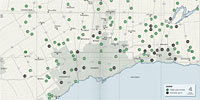
Click on the map links to find golf courses by geographic area or type. Click the markers on the map to read more about the golf course and get directions.
*********************
The Bogeyman's Top 10
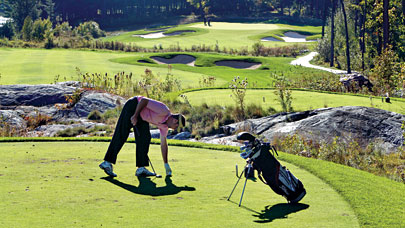
Boldly going where few golfers have gone before - to the GTA, Muskoka and beyond!
Apr 10, 2008 12:05 AM
Bob Marshall
Whenever your most pleasurable games and memorable courses are crammed into a couple of weeks, it almost seems uncivil.
After attending The President's Cup at Royal Montreal, immediately followed by the seductive scenery of Mt. Tremblant's Le Geant and Ontario's Muskoka Bay, it was a golfer's dream vacation.
Yet my biggest thrill last year was playing Canada's most northerly - and westerly - golf course up at Dawson City in the Yukon, a gorgeous wilderness course with real live grass and just one live golfer.
Ordinarily, you'd stop there and be done with it. But these days, I feel compelled to forge on and seek the most easterly and southerly clubs of Canada and add them to my resume of trifles. Luckily, my loyal cadre of spies still keeps me informed about course conditions around the GTA and I'm always intrigued by new clubs and changes in the old standbys.
Incidentally, during my two years of glorious retirement, I golfed every day with my loyal band of brothers - Bob, Rod, Bill and Ziggy - still managing a single digit handicap, although I've been playing for so long, it's in Roman numerals. Just maybe I'm slowing down a bit, too.
The other day, a little old lady tapped me on the shoulder at the seventh tee and asked if she could play through. But now it's time for a Captain Kirk shot - one that goes where no man has gone before - my
picks for the birdies and bogeys, and top 10s of 2007.
TOP 10: GTA PUBLIC COURSES
1. Bond Head North
2. Eagles Nest
3. Copper Creek
4. Wooden Sticks
5. Glen Abbey
6. Lionhead Legends
7. Angus Glen South
8. Woodington Lake
9. Osprey Valley
10.Royal Ontario
TOP 10 BEYOND THE GTA COURSES
1. Muskoka Bay
2. Taboo
3. Black Bear Ridge
4. Deerhurst Highlands
5. Legends on the Niagara
6. LochNess Links
7. Tangle Creek
8. Copetown Woods
9. Timber Ridge
10.Atoka (Cranberry Resort)
FROM THE 19TH HOLE
Top executive course: Innisbrook
Toughest tee time: Twenty Valley
Best senior value: Coral Creek
Longest hole: Black Bear Ridge's 11th, 690 yards
Best greens: Deerfield
Top waste bunkers: Copetown Woods
Scruffulous driving range: Le Geant
Friendliest staff: Royal Ontario
Most unique 150 yard markers: Dawson City's dredge buckets
Most hair-pulling short par 4: Royal Ontario's 14th, 239 yards
Quirkiest hole: Lakeview's 12th
Best bar view: Peninsula Lakes
Classiest clubhouse and art gallery: Bond Head
Trickiest green: Wildwind's 3rd
Yummiest chili: Bond Head
Longest driveway: Muskoka Bay's mile
Worth bootlicking to play: 18th Le Geant; 9th Muskoka Bay
**********************************
New view of the Grand Canyon
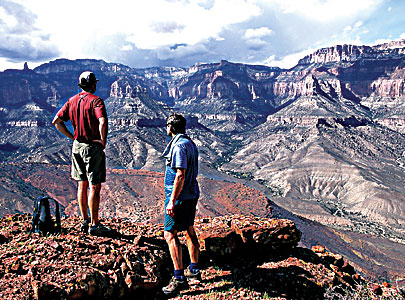
A different take on the natural beauty of the Grand Canyon
Apr 12, 2008 04:30 AM
Dan Leeth
Special to the Star
GRAND CANYON, ARIZ.–A canyon wren greets the dawn, its call a descending scale of flute-like notes. Eyes open to the sight of distant palisades blushing in the morning sun. Here at the canyon bottom, a kilometre below the rim, shadows linger well into the morning.
One by one, campers crawl from sleeping bags, grab mugs and head toward the aroma of coffee and pancakes. Beside them flows the Colorado River, a football-field-wide channel of muddy-brown liquid. The nearby current mildly laps the bank, but a quarter-mile downstream, the ominous roar of rapids reverberates from riverside cliffs.
Stunning confines, tasty cuisine and the promise of coming cataracts – another day begins in the depths of Arizona's Grand Canyon.
Every year, more than four million tourists stand at the canyon's edge and gape at its cliffs and chasms, shapes, shades and shadows. A mere 25,000 gaze back annually from below.
Instead of expansive grandeur, folks at the bottom experience a corridor filled with intimate colours, textures, sights, sounds and smells.
Riverside landforms vary from sheer cliffs to tumbling slopes and skirted terraces. Surprises abound. Springs gush from cliffside caves, waterfalls tumble over desert bluffs and tributary canyon slots lead to emerald grottos.
Willows and tamarisks shade sandy benches. Coyotes, deer, and desert bighorn roam streamside flats. Other than a pair of foot bridges near Phantom Ranch, the only marks of humankind are historic.
"There are not many places in North America where you can go for 18 days on a river trip and not go through communities," observes part-time river guide Matt Claman. "This is a very long stretch of uninterrupted river travel that also happens to have a lot of whitewater."
The Grand Canyon offers over 150 named rapids. They range in scale from wavy churners to frothing maelstroms sporting waves higher than houses and holes that could swallow a Hummer. Bounding, bouncing and bashing through one of these can be a puckering endeavour.
Most river trippers hurdle through the canyon's cataracts on pontoon rafts powered by pistons. The rigs stretch around 10 metres in length and can hold 15 or more people plus guides. Gear, food, fuel, spare engine and generally enough adult beverages to open a streamside speakeasy get strapped on top.
These floating motor coaches travel at around 13 km/h, giving gas-powered trips the advantage of speed. Passengers can traverse the length of the canyon in six days, with optional seven- and eight-day journeys available to those wanting more time for side-canyon exploration.
Motor rigs plough through whitewater, treating passengers to an amusement park-like, drenching ride. Riders, especially those near the bow, feel the thrill as waves of water pour over them. Because of their power and size, motor rafts seldom flip.
Motorized trips have their disadvantages. Thjere's the din of engine noise, and those sitting near the back smell the exhaust. Guide interaction is limited. Scenery passes quickly and the shortness of the trips and size of the groups make it difficult to get to know fellow passengers.
"People go back to their cliques and families," observes Ryan Zimmer of Wilderness River Adventures. "You have a few people who mingle, but not many."
Then there's the speed itself. Some think that even eight days in the bottom of the canyon is not enough time. For them, commercial outfitters offer longer, muscle-powered alternatives.
The most common go-slow options employ oar-powered, inflatable rafts.
Floating at half the speed of piston-powered rigs, a full-canyon oar journey takes a dozen days or more. The unhurried pace allows more time for absorbing the majesty of the canyon. Vacations become experiences.
"You get people who come down here for 16 to 18 days and it's a completely different experience," says guide Bill Bruchak. "They become part of the place and end up taking it with them. That's what boatmen call `getting it.'"
If motor rigs are the river's busses, these are its minivans. The rafts carry four to six passengers each plus an oarsman. Chummy seating and lack of engine noise gives guides the opportunity to share natural history, human history and a few tall tales from their own canyon history.
Their smaller size and lower-slung seating make oar-powered rafts feel more exciting in heavy whitewater. Although it happens infrequently, they will flip more easily than their motorized brethren. Fortunately, they are far easier to turn back, sunny-side up.
For those who think that watching a guide do the work is too sedentary, a number of companies offer paddle rafts. Passengers wielding plastic paddles provide the locomotion while guides bark instructions. Success in the whitewater depends on strength and teamwork.
Of course, paddle rafting is not for the unfit. With 364 kilometres to cover, upper body muscles get a Bengay-worthy workout.
Paddling a rapid can be exciting but when it comes to whitewater, few rides compare to those provided by dories. Invented in the 1960s, these wood and fibreglass vessels carry four passengers and an oarsman. They are broad on the bottom and feature upturned ends with pointed bows and sterns. Costly, colourful and classic, dories are the sports cars of commercial river running.
They are also somewhat rare. Of the canyon's 16 outfitters, only two (Grand Canyon Dories and Grand Canyon Expeditions) offer dory trips.
The most manoeuvreable commercial craft on the river, a dory's hard sides, sharp bow and rocker-shaped hull allow it to carve its way through a rapid like a Ferrari twisting down a race track. Guides carefully plot routes. Unlike rubber rafts that bounce off boulders, when a dory smacks a rock, holes can result. Most are easily patched with fibreglass and epoxy.
Dories are also the most prone to tipping, and the easiest to right. To help keep the boats from going bottoms-up, passengers learn to lean into waves. After a rapid, they bail out the boat.
The fun of a run can be measured by the inches of liquid sloshing in the foot wells.
Grand Canyon float trips are not for everyone. Nights are spent camping on sandy benches. Shelter comes in two-person tents, which you erect yourself.. Mattresses are foam pads, and bedding is a sleeping bag.
The bathroom consists of a military-surplus ammo can topped with a toilet seat, and the only bathing facility is the 7C river. There are bugs, bats, snakes, scorpions, rodents and the occasional skunk to contend with, along with ample blasts of wind, rain and heat.
Cell phones don't work at the bottom of the canyon, and there's no TV, WiFi, Internet, or even electricity to recharge an iPod. In the world of interconnectivity, it's a disengaging getaway.
On the other hand, most commercial trips provide guide-cooked dining with menus featuring fresh foods through trips' end. Experienced river runners share knowledge, stories and song.
Hikes lead to waterfalls and pools nearly impossible to reach by any other means. Sunsets paint the sky pink, and starlit nights are simply stellar.
Best of all, the river provides an ideal venue for testing limits, challenging fear or just contemplating the meaning of life.
"The greatest thing for me being down here is just seeing how it affects different people," says Wilderness River Adventures guide Paul "Okie" Jones, "and trying to see how it has affected me."
Whether motor or muscle-powered, the experience is not soon forgotten.
Dan Leeth is a freelance writer based in Aurora, Colo.
Just the facts
When: Spring weather may be unstable and temperatures can range from pleasantly warm to downright cold. The river is most crowded in summer, with groups adjoining camps. Days can be scorching. Late summer-early fall brings cooler temperatures and generally more stable weather.
Outfitters: A list of the 16 companies licensed to operate in the Grand Canyon may be obtained from the Contact Grand Canyon National Park or the Grand Canyon River Outfitters Association. Full-canyon trips range from six to 18 days and cost $2,000 to $5,000 U.S. or more.
Outfitters generally provide camping gear and dry bags free or at a nominal rental fee. Most companies offer half-canyon trips of 3 to 5 days with a takeout or put-in at Phantom Ranch, at the bottom of the Inner Gorge. The only option to hiking is to arrange for mule transport.
Shorter trips: Colorado River Discovery offers half- and full-day trips down the river from Glen Canyon Dam to Lees Ferry. Prices run $70-145.
At the western end of the canyon, the Hualapai tribe (www.destinationgrandcanyon.com/runners.html) offers one-day, white-water float trips downstream from Diamond Creek. Cost is $249 plus a $79 transportation fee.
Information: To learn more about the Grand Canyon, contact the National Park Service or the Grand Canyon River Outfitters Association.
For more visiting the Grand Canyon State, contact the Arizona Office of Tourism.
******************************************
Victoria's grande dame still charms
guests with
a sumptuous serving
of treats, tea and tradition

Mar 29, 2008 04:30 AM
Jeremy Ferguson
Special to the Star
Victoria, B.C.– What grande dame Canadian hotel was designed by a man who'd later be murdered, played host to a wild cougar, charges $60 for afternoon tea and is celebrating 100 years in the business?
It's Victoria's Empress Hotel, which opened its portals in 1908 – the year Henry Ford produced his first Model T, the first-ever Mother's Day was celebrated and Anne of Green Gables was published.
The stately Edwardian pile was designed by Francis Rattenbury, who had also designed the nearby B.C. Legislature.
To this day, the two define the city's British sensibility and colonial charm.
Rattenbury later returned to his native England and was bumped off by his chauffeur, who was having an affair with Mrs. Rattenbury.
A century later, the hotel – now branded as the Fairmont Empress – remains a Canadian classic. Travel magazines perennially list it as one of the world's great hotels.
The hotel looks back at a who's who of royals, politicians and movie stars. Shirley Temple stayed, allegedly hiding out from kidnappers. Bob Hope joked about using the corridors as a putting green. Barbra Streisand was turned away from Afternoon Tea for running afoul of the dress code. Rita Hayworth, John Wayne and Lassie – yes, Lassie – slept in the Vice Regal Suite.
The only celebrity ejected for bad behaviour was actor Peter Lawford, charter member of Frank Sinatra's Rat Pack, who'd gone overboard attempting to seduce a room-service girl.
But no guest was more stellar than the 60-kilogram cougar that dropped in back in March 1992.
The story that the cat sauntered into the lobby and gave the desk manager a new white hairdo is just a rumour. In fact, the feline was found in the hotel's indoor parking lot. It was pursued by a hotel employee who insulted it by mistaking it for a dog. Finally, it was tranquilized and packed off to a new home in the Cowichon Valley.
This Centennial year, the Empress has a portfolio of treats for guests who walk through its imposing portals. They range from a bargain accommodation package to a new souvenir book.
In the baronial opulence of the Empress Room, the menu spins through time to offer the gastro-hits of 1908 – the likes of tournedos Rossini and baked Alaska – only lightened up in the contemporary mode.
Much of the Centennial fuss has to do with the Tea Room. It's been fastidiously refurbished.
"We spent $175,000 replacing the white oak floor," says general manager Roger Soane. "We finished it to look as if it'd been around since the beginning. It looks so much like the original, people can't tell the difference."
Afternoon Tea goes back the full hundred years.
"It's what we're known for," explains Soane. "It's not about what you get. It's about the experience. Like being in Singapore and going to Raffles for a Singapore Sling. It's not breakfast, lunch or dinner. It's purely for pleasure. It's about good friends and decadent food. There's no rush, no worry, just an abiding sense of tradition."
The hotel sells more than 115,000 teas every year. That's a cool minimum revenue of $6.9 million.
Tourists can't seem to go home without it. Cruise ship passengers practically storm the room.
"Afternoon" tea is often served at 9:30 p.m.
But what do you get for $60? You're seated in an early 20th century room that's cozy and formal at the same time. There's Royal Doulton china, a silver tea service and a piano player.
The slate of teas comes attuned to a time when everyone's a tea connoisseur. The Centennial tea, for instance, blends leaves from Assam in northeast India for a predominantly malty flavour, Sri Lanka for fruitiness and Kenya for floral aroma.
The food platter is a triple-tier of dainty sandwiches, scones and pastries.
"Americans start at the bottom and work their way up to the pastries," says Ray, a veteran server. "The Queen works her down from the desserts to the sandwiches. Canadians start in the middle."
The smoked-salmon-and cream-cheese sandwich beats its cucumber counterpart. The scones demonstrate why the recipe hasn't changed in 100 years. Among the desserts, the tart cherry coated in chocolate is a decided winner. Included is a glass of Stellar's Jay, the award-winning bubbly from Sumac Ridge in the Okanagan Valley.
The pot thickens with the Centennial Tea to be served Fridays from May to October in the Library. The tab jumps to $100.
"It'll be like tea in a Victorian home," says Soane. "There'll be a harpist. The tea sommelier will be working with the best. The food will be upgraded to include items such as lobster and caviar. But it's still about the experience of being here."
Jeremy Ferguson is a freelance writer based in Victoria, B.C.
*******************************
Upscale Key West still funky
Once-sleepy hideaway now has art galleries, a symphony orchestra
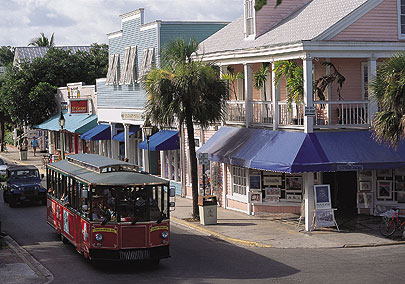
Mar 06, 2008 04:30 AM
Mike WILLIAMS
Special to the Star
KEY WEST, Fla.–You can still see chickens crossing the road near the busy intersection of Duval and Truman.
Once they might have been chased by an axe-wielding cook with a gleam in her eye. But today they are more likely to dodge tourist trolleys or shoppers weighed down with high-end fashion accessories or original works of art.
But to those who love the laid-back feel this once-sleepy hideaway was long known for, the chickens are a reassuring sight.
Key West may have gone upscale, but the place hasn't lost all its funky, renegade charm.
Drunks still wander arm-in-arm out of Sloppy Joe's, the wisecracking street artists still put on whimsical shows at sunset on the dock at Mallory Square and the descendants of Ernest Hemingway's cats still lap water from the urinal the author hauled home from his favourite bar.
Key West has gotten pricey, especially during the winter season, but it also has a lot more to offer these days than simply a rousing good time slamming rum drinks and singing along to Jimmy Buffett songs. A new art film cinema just opened, art galleries are almost too numerous to keep up with, local troupes perform plays frequently, the annual literary seminar regularly attracts important authors and even a small symphony orchestra calls the island home.
And if culture isn't your thing, there's always the standard fare of scuba diving on America's only coral reef, sport fishing in the azure waters of the Gulf Stream, kitesurfing or sunbathing, strolling the shops and tourist traps, taking a walking tour to gaze at Victorian mansions set in a tropical paradise, or biking your way around an island famous for its end-of-the-road ambience.
Don't forget fine dining, fresh seafood and people-watching, always a winner in a place with as many outrageous characters as Key West.
"It's changed a lot in recent years, but it's still a town that inspires creativity," said Sharon Wells, an artist and student of local architecture who escaped to Key West some 30 years ago. "It's hard to put myself back in 1976 when I came here. It was so incredibly different then. But it's still the people who make the place.''
For visitors looking to escape their everyday grind for a relaxing getaway, Key West is hard to beat, and the prices are certainly competitive with most Caribbean islands.
One of the best ways to see the older, more picturesque part of the island is a walking tour. Wells has produced an excellent "Walking and Biking Guide to Historic Key West." It is available free at her gallery, KW Light Gallery on Duval St., and in many of the racks with tourist flyers all over town.
More than a dozen different walks are organized around themes that include literary landmarks, Victorian mansions, a graveyard ramble, a jaunt through the city's forts and military installations, an Afro-Caribbean tour and a gay trek.
The literary tour is a favourite, and Wells' book includes thumbnails of the remarkable list of heavyweight authors who made Key West a favoured retreat, including Hemingway, Tennessee Williams, Richard Wilbur and Ralph Ellison.
The Hemingway home at 907 Whitehead St. is one of the best because you can tour it, gazing at the desk where the author plied his trade and the airy rooms where he entertained a dazzling array of Hollywood celebrities and bon vivants. The tour costs $11, but is worth the price for the colourful stories the guides tell about the author, his four wives and the dozens of cats that still have the run of the place.
Try renting a bicycle or a motor scooter to expand your touring. The island is only 6 1/2 kilometres long and three kilometres wide, but you can still fill up a day exploring back streets, many of which offer glimpses of fabulous mansions or whimsical shacks.
History comes alive at the Key West Shipwreck Historeum Museum on Whitehead St., just a block from Mallory Square. Actors in period attire entertain visitors, who can also see artifacts from the 1856 wreck of the Isaac Allerton.
Nearby, Mel Fisher's Maritime Museum will dazzle you with gold coins and other treasure brought up by Key West's most famous treasure salvage outfit. Both are great for kids, as is the Key West Aquarium, just across the street from the Shipwreck Historeum.
Key West is hard to beat for an island vacation. And while it has grown and changed dramatically in recent decades, its charm remains.
"There is still a great sense of community here," said Wells.
Cox News Service
*********************
Journey to Earth's edge
Travelling the Karakorum Highway to the part of China 'that isn't China'

Mar 01, 2008
Mitch Moxley
Special to the Star
XINJIANG, CHINA–We drive the Karakoram Highway linking China and Pakistan in a rickety Volkswagen Santana; our driver and guide is a bespectacled man named Xiao Xu.
Xiao, who runs a travel café in a hotel in Kashgar, a city in the far reaches of China's Xinjiang Uighur Autonomous Region, is testy this morning. He'd expected two people for our trip, but late last night my travel partner and I found a young Australian couple – Tom and Kelly – to join us.
I ask Xiao how long the trip will take.
"With two people, three hours," he huffs, his clear-rimmed glasses resting low on the bridge of his nose. "But four people, four hours. Because it's uphill."
We're on our way to Karakul Lake, a glacier lake 3,600 metres above sea level tucked in the Pamir Mountains, a stone's throw from the Tajikistan border. We've arranged to camp in a yurt belonging to Kyrgyz herders.
This is the China that isn't China. In fact, there's little about Xinjiang's sprawling and inhospitable western region that resembles the Middle Kingdom. Residents are predominantly Uighur Muslim, peppered with Kyrgyz, Kazak and other minority groups living in an area of mostly desert and mountain ranges.
Unlike much of China's natural beauty, the region hasn't been devastated by the nation's growing tourism machine – though there are signs that is changing. At Karakul Lake, a small Chinese restaurant has already been built, construction on a new hotel is underway, and the number of tour groups making day trips is increasing – a trend sure to continue considering the growing interest in travel among China's affluent.
For now, however, a trip to Karakul, or "black lake" in Kyrgyz, still feels like a visit to edge of the Earth.
First, you have to make it. The drive out is harrowing, not so much because of the terrain, which is rugged, but because of Xiao's driving. He rides the Santana from side-to-side on the highway, as if practising alpine ski turns. When his eyes catch a mountain or lake on the side of the road, the car drifts to whichever direction he is looking.
Then there's the fact that the Santana's back seats have no seat belts.
It's a remarkable drive.
The Karakoram is the highest paved international road in the world and the scenery is striking – mountain ranges, glacier lakes and sand dunes. We stop for photos and locals with weathered faces from the cold try to sell us trinkets and watches.
Sometime after noon, we arrive at Karakul Lake.
It's as impressive as we'd heard – a pristine, blue-green jewel, surrounded by snow-capped mountains, bare hills and grazing camels. Muztagh Ata Mountain, at 7,500 metres high, looms in the background.
Fortunately, few tourists have made the impressive trek to the lake, and after dropping off our bags in our yurt and eating a quick lunch with our Kyrgyz hosts, we head out for what we're told will be a four-hour hike around the lake.
Almost immediately I feel shortness of breath – altitude. The scenery, however, distracts me. We snap photos of camels eating sparse grass around the lake, kicking their many turds as we walk.
An hour into our hike Tom persuades me to climb a lakeside hill. So, dressed in jeans, Nike Air Max and a knock-off Arc'teryx jacket I bought at a Beijing market, I climb.
The first section nearly finishes me off. I feel hungry, thirsty and faint. On a steep and rocky slope I look out toward the lake and feel disoriented. For a second, I forget where I am.
Tom keeps going and I stop, but as I watch him climb I get more determined to reach the top, and about an hour after we started, I do.
We continue around the lake, hopping over slim, snaking rivers, much to the bewilderment of grazing yaks. Dirty-faced kids approach us offering camel rides and asking for chocolate.
"Chocolate surprise?" they say, hands extended.
Near sunset, about six hours after we set off, we make it back to our Kyrgyz family and eat a dinner of yak meat with rice, cabbage, onion and tomato, and drink cups of black tea.
Theirs is a hard life. The father, who looks permanently exhausted, herds camels, yaks and sheep. There are five children, aged 3 to 16, all living in a small stone house, 6 metres by 4 1/2 metres at most.
The walls are covered in wool blankets – a colourful blend of reds, blues and greens. The mother and her daughters are all dressed the same: skirts over stockings, thick wool sweaters and bandanas on their heads. They look like Matryoshka (nesting) dolls.
We talk Chinese politics with Xiao Xu, our guide.
"In China, rich government, poor people," he says.
"Do you think China will ever change?" Tom asks.
"It would take a thousand years," Xiao replies.
Xiao's English is spotty but his points well-taken. A few hours later we retire to our yurt. It's freezing cold and none of us can sleep (maybe it's the tea, maybe the altitude, maybe both).
It's pitch black, too, and when I get up to go to the bathroom in the middle of the night, I can't see a thing. Returning to the yurt I slam into the fireplace and struggle to find my spot.
We're slow-moving and groggy the next morning.
"How did you all sleep?" I ask.
"Poorly," Tom replies.
We eat cold bagels and drink tea, say goodbye to our hosts and board the shaky Santana, which barely starts in the cold and, later, stalls in the middle of the highway.
Amazingly, Xiao gets us back to Kashgar in one piece. Five hours after waking up in a yurt belonging to Kyrgyz herders, we're back in Kashgar drinking beer in a hotel bar, and two days later we're in Beijing, back in the real China, back from the edge of the Earth.
Mitch Moxley is a freelance writer based in Beijing.
JUST THE FACTS ABOUT KARAKUL LAKE
THE FASTEST way to Kashgar is via Urumqi, Xinjiang's capital, either by air (China Southern Airlines runs three flights daily) or a 24-hour train ride. Buses to Karakul Lake run daily from the Kashgar international bus station from May to October for about $7. Taxis can be hired for about $15 per person at most Kashgar hotels that accommodate foreigners.
YURT STAYS can be arranged through John's Information Café (johncafe.net) or at the travel desk in the Chini Bagh Hotel. They cost roughly $10 per night per person, food included.
THE CHINESE Culture Club runs tours to Xinjiang, including a night at Karakul Lake. chinesecultureclub.org
***************************
Falling house prices lure snowbirds south
Feb 24, 2008 04:30 AM
Lauren Krugel
THE CANADIAN PRESS
CALGARY–West Vancouver realtor Cal Lindberg says a growing number of his clients have been inquiring about buying vacation homes in the sunny U.S. south.
"They're looking to buy down there just because of the issues with the subprime mortgages. We're hearing it every day on the news that prices are just dropping like a rock," said Lindberg, president-elect of the Canadian Real Estate Association.
Under normal circumstances, there would be about 3,000 real estate listings in Palm Springs, Calif., he said. But with the U.S. housing crisis deepening by the day, there are about 9,000 houses and condominiums up for sale.
"That just tells you that prices are going to continue to drop because when you have that amount of choice, it's going to put a lot of downward pressure on prices."
Mark Dziedzic worked as a financial planner in Toronto for many years before fleeing south to Arizona two years ago. He founded a real estate firm called Arizona for Canadians, which helps Canucks find homes in that sunny, warm state.
"It's a little bit of a perfect storm for Canadians right now because you've got the dollar at par and you have somewhat of a housing crisis with the subprime mortgage debacle. It's a time we haven't seen in 30-plus years. It really has created a buzz," he said, noting that about half of home buyers in Arizona are Canadian.
He said Canadians are able to negotiate with banks to get some good bargains – sometimes paying just 50 cents on the dollar for homes.
"When they compare it to the value of property up in Canada to what they can get in the States, many times they're very shocked."
The most popular destinations for south-bound Canadians are Florida, Arizona, Texas and California, said Lawrence Barker of the Canadian Snowbird Association.
Barker's group provides a number of services for its members – mostly retirees spending up to six months of the year in the United States – including currency exchange services, group and home insurance and an auto club.
Even though U.S. properties are becoming more affordable for Canadians, Barker cautions against rushing into a purchase. "People need to rent for a couple of years, check it out, then if they're happy, consider purchasing," he said.
Non-citizens are only allowed to stay in the United States for a maximum of six months, regardless of whether they own property.
Snowbirds also have to have a firm understanding of how U.S. property and estate taxes work. And buying home insurance in hurricane-belt states like Florida can be tricky.
****************************************
10 reasons to travel in March
Feb 23, 2008 04:30 AM
COMPILED BY ANNA HOBBS
1. STAMPEDE TO HOUSTON
From March 3 to 22 the action is non-stop at the Houston Livestock Show and Rodeo where top pros from around the orld compete in championship roping, bronco and bull riding. Click Here for Website
2. ECO VOLUNTEERING
The Earthwatch Institute offers holidays for volunteer environmentalists. From from March 3 to 15 you can experience the rich culture of the Pantanla, Brazil's world-class wetland, and help scientists conserve the diversity of wildlife of this ecosystem. Click Here For Website
3. GIRL TIME
Laugh, let your hair down, bond with your best buddies at an all-girls weekend. The Ultimate Pajama Party rolls into The Fairmont Jasper Park Lodge March 14 to 16. Click here for Website
4. MET MADNESS
From March 3 to 7, Smithsonian Journeys offers a chance opportunity to go on a backstage tour of New York's Metropolitan Opera, meet the artists and attend three great performances, including Renée Fleming in as Desdemona in Otello. Click for Website
5. TULIPS IN HOLLAND
Every spring, the Keukenhof Gardens are a feast for the eye. More than seven million tulips and other spring bulbs bloom on more than 32 hectares. Starting March 20. Click for Website
6. EGG HUNT
To mark the 100th birthday of Beatrix Potter's Jemima Puddle-Duck Britain's Lake District is staging the country's largest Easter Egg Hunt. From March 19, kids can search across Cumbria for 100 specially designed eggs, each leading to a great prize. Click for Website
7. ROARING GOOD TIMES
Heritage Holidays in Yosemite, Calif., celebrates the glamour, style, and frivolity of the Roaring '20s from March 2 to 4, with speakeasies, fashion shows, a gala dinner and ball. Click for Website
8. BEER IN PHILADELPHIA
March 7 marks Philadelphia's first Beer Week, hosted by Don Russell, also known as "Joe Sixpack," a local journalist and beer expert. Events include a tutored tasting at the University of Pennsylvania Museum of Archeology and Anthropology. Click for Website
9. GLASGOW FOR COMEDY
Taking to the stage from March 6 to 23, top stand-up acts, brand new comedy plays and classic films at Magners Glasgow International Comedy Festival. Click for Website
10. BUCKINGHAM BECKONS
From March 14 to Sept. 21, Amazing Rare Things: The Art of Natural History in the Age of Discovery is open to the public in the Queen's Gallery at Buckingham Palace. The exhibit features the works of influential artists such as Leonardo da Vinci. Click For Website
**********************************************
Top 10 attractions on Prince Edward Island

GREENWICH, P.E.I. NATIONAL PARK (ST. PETERS)
Parks Canada protects a rare system of sand dunes and sites of early aboriginal and Acadian occupation dating back 10,000 years. Interpretive trails, spectacular sand dunes. Relax at the beach and learn at the interpretation centre.
COLLEGE OF PIPING AND CELTIC PERFORMING ARTS OF CANADA (SUMMERSIDE)
A summer-long Celtic Festival set in an institution that inspires "excellence in Celtic performing arts through quality educational programming." collegeofpiping.com
CONFEDERATION TRAIL
From Tignish in the west to Elmira in the east, the Confederation Trail is a 270-kilometre recreational park, ideal for walking, running or cycling.
NORTH CAPE
View the longest natural rock reef, walk the Black Marsh Nature Trail, visit the Atlantic Wind Test Site and see the North Cape wind farm.
ROSSIGNOL ESTATE WINERY (LITTLE SANDS)
Rossignol offers a variety of premium fruit and table wines. Sample the wines and view folk art, Island paintings and crafts.
PRINCE EDWARD ISLAND PRESERVE COMPANY (NEW GLASGOW)
See, smell and taste great preserves, experience the Café Clyde featuring country breakfast, visit the gift shop and meet the kilted owner. preservecompany.com
GATEWAY VILLAGE (BORDEN-CARLETON)
The village is at the foot of the Confederation Bridge. You can learn about the history and culture of the Island and of the transportation modes across the Northumberland Strait.
ORWELL CORNER HISTORIC VILLAGE (ORWELL)
Experience the life and times of rural crossroads community in the 1890s, with a blacksmith shop, country store, church, school, farm buildings and community hall. Ceilidhs are held, with traditional music, stories and dance.
LENNOX ISLAND MI'KMAQ CULTURAL CENTRE (LENNOX ISLAND)
A community museum that aims to promote and revitalize Mi'kmaq culture and interpret Mi'kmaq history. Hike the 10-kilometre "Path of our Forefathers," enjoy traditional foods or go deep sea-fishing.
OLD CHARLOTTETOWN
The birthplace of Confederation, P.E.I.'s capital city features many historic public buildings and family homes. Stroll the many streets and visit Province House – where the "Fathers" met, Confederation Centre of the Arts – the home of Anne of Green Gables: The Musical and Founders' Hall – Canada's Birthplace Pavilion. www.city.charlottetown.pe.ca
************************************
Hot destinations to
Check out in 2008
The editors at Frommer's have searched the globe and consulted their many author-experts to come up with the top destinations for 2008. Here are 10 of the best and most beautiful spots the world has to offer:
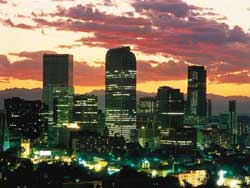
1. DENVER, COLO. Home to many exciting attractions including the Denver Art Museum, a state-of-the-art opera house in the Denver Center for Performing Arts and the annual Great American Beer Festival each fall. There's also easy access to a multitude of outdoor activities.
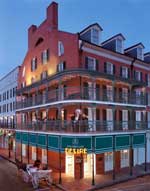
2. NEW ORLEANS, LA Now starting its third year post-Katrina, it's still a vital destination. Transportation is affordable; infrastructure is back, and the primary tourist areas (French Quarter, Garden District) were not heavily affected by the flooding. The city's historic St. Charles streetcar just resumed service. Almost all the major hotels and restaurants have reopened, and the enforced closures gave some the opportunity to completely revamp.

3. PITTSBURGH, PA Pittsburgh turns 250 next year, and special events commemorate its history, including theatre and ballet performances, sports events, the Pittsburgh Biennial and Carnegie International arts fairs, as well as one of America's most impressive cultural collections: the Carnegie Museums of Pittsburgh.

4. AMERICAN WHISKEY TRAIL A deliciously aromatic tour of America's love-hate relationship with spirits, the journey is fuelled through stops into a half-dozen historical spots across five states including the sites of the early whiskey rebellion in Pennsylvania, taverns and a dozen distilleries.
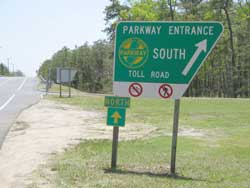
5. EXIT ZERO ON THE GARDEN STATE PARKWAY, NEW JERSEY Despite the belief that New Jersey is all `Mobbed up' and choked with industrial waste, the opposite is largely true, especially in the overlooked southern Jersey shore. Take the last exit to discover charming boardwalk towns including Cape May, Ocean City, and Wildwood.

6. ESSAOUIRA, MOROCCO Jimi Hendrix and Orson Welles both spent time in this Atlantic coastal town, today a UNESCO World Heritage city. There's a large square – perfect for quality people-watching – a quaint port where fishermen still bring in the daily catch and mend their nets and the medina is Morocco's most traveller-friendly: a mix of art galleries, a jeweller's souk, and shops selling everything from local thuya woodcrafts and argan oil-based products to surf wear and handmade leather goods.
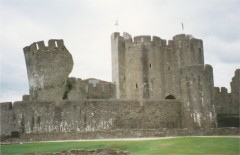
7. CARDIFF, WALES The former industrial city went into decline as its coal industry, factories and rail yards died out. Now, it's reinvented itself as a cosmopolitan centre that still retains its ancient Welsh heart. Anchoring the city is Cardiff Castle, while the astounding performing arts space, the Wales Millennium Centre, holds court in the revitalized waterfront.

8. ST. LUCIA The island's lush rainforests and mountainous landscapes provide dramatic scenery and hair-raising road trips. It's the spot to go for quieter vacations with snorkelling and diving in protected reefs, but you can add to the adventure by scaling St. Lucia's signature twin pitons and ziplining through the rainforest.
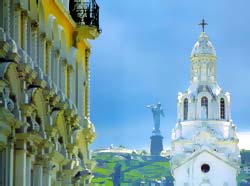
9. QUITO, ECUADOR Built on the ruins of a major Incan city, Quito is a perfect blend of colonial charm and modern city. Its 500-year-old churches wearing their hand-carved facades sit alongside a skyscraper-laden metropolis with a growing culinary and nightlife scene.
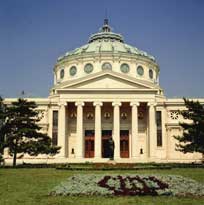
10. ROMANIA While prices have climbed in popular spots like Croatia and the Czech Republic, Romania remains an astonishing bargain and an authentic experience. The painted monasteries along the border with Ukraine are UNESCO World Heritage Sites. The Danube River Delta offers some of the world's best bird watching for rare species, and the Carpathian Mountains are stunning and still pristine.

*****************************************
Destinations to watch in 2008
By Christine Sarkis, SmarterTravel.com
The New Year heralds a fresh batch of hot destinations for 2008. This year, major festivities put three cities in the spotlight, while serious tourism infrastructure building secures other hot spots top billing. Plus, find out more destinations to keep on your radar in 2008.
Liverpool

The city once known primarily as the birthplace of the Beatles has come into its own as a European city packed with sophisticated cultural pursuits and rich history. Liverpool has been preparing for its time in the spotlight since it was named a European Capital of Culture for 2008 five years ago. The highly coveted Capital of Culture designation earns cities the chance to feature and expand their thriving art and cultural offerings, and gives visitors an entire year of special events and festivals to enjoy.
Even without the year-long celebration in 2008, Liverpool's arts offerings impress. The city already boasts eight world-class museums (including its own Tate Museum), a major arts festival, a center for arts and creative technology, and a serious dedication to community art.
But in 2008, after years of sprucing up the city and improving its tourist and leisure infrastructure, the spirit of art will truly take center stage. Over 350 visual and performing arts, sporting, and heritage events are planned during Liverpool's year as a Capital of Culture. Best of all, the majority of events are free. Combine that with Liverpool's relatively affordable hotels and restaurants, and you've got a destination ready to give London a run for its money.
Finding ways to join the festivities is easy. Online, check the Liverpool08 website, and when you're in the city, visit the tourist information center focused on 2008 events and activities.
You should book ahead during major events to ensure availability. VisitLiverpool.com keeps track of special offers from hotels.
Quebec City
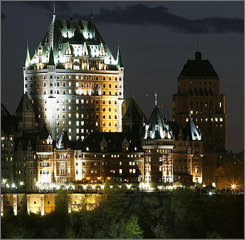
In 2008, Quebec City will celebrate its 400th anniversary with a year of festivals and events. It's already clear that the city knows how to throw a party—you don't have to look farther than the wildly popular annual winter Carnaval de Quebec (running from February 1 to 17), to know that for sure. With a whole year of celebrations, Quebec City promises to be an exciting destination in every season in 2008.
The anniversary kicks off on New Year's Eve with a giant party. Throughout the year you'll find events such as interactive art tours and exhibitions, performances, and in the French Canadian spirit, a unique show by Cirque de Soleil. The MonQuebec2008.com calendar details more events.
The party will change the very landscape of the city as well. Long-neglected banks of the Saint-Charles River have been restored and trails have been added so the public can better enjoy the river. New public spaces are in the works, including a museum opening as an anniversary gift to the residents of and visitors to Quebec City.
Be sure to book well ahead for the New Year's kickoff celebration, Winter Carnaval, and the official commemorations in early July. Accommodations prices may rise a bit during those times, but there's a city-wide effort to keep prices reasonable. The Quebec City Tourism site lists current accommodations packages available through city hotels.
Beijing
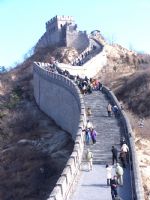
If you host the world's premier sporting event, it's safe to say you're going to have a big year. The countdown has begun to the August 2008 Summer Olympics and Beijing is kicking preparations into high gear. The city is expecting three million spectators during the event. And, even if you're not coming for the Olympics, you can benefit from the expanded infrastructure.
You don't have too look far to find improvements geared towards making the city more visitor friendly. Beijing's new airport terminal, slated to be among the world's largest, will open before the summer games. A profusion of new hotels, including openings from Best Western, Marriott, and Accor, give Western visitors more familiar accommodations choices.
United launched a new Washington, D.C., to Beijing route earlier this year. You'll find more flight options to China too. U.S. airlines American, Delta, and United are all busy forging partnerships with airlines in China to expand their route networks, which has the benefit of giving U.S.-based passengers easier booking and more mile-earning options. And 2007's U.S.-China open skies agreement means the route options between the two countries will continue to increase in the coming years.
Querétaro, Mexico

Colonial cities and legendary towns make up the Querétaro region of central Mexico. Wander through history in Santiago de Querétaro, where adjoining districts of Baroque monuments and indigenous neighborhoods illustrate the peaceful coexistence of cultures that has defined the town for the last four hundred years. In nearby Bernal, the towering rock monolith, which many say imparts a mystic energy, has inspired the official "magical town" designation. Vineyards, markets, hot spring spas, and archeological sites are among the regions other charms.
In 2008, the region will be easier to reach from U.S. departure points than ever before. And in a time when exchange rates in Europe and Canada aren't doing Americans any favors, Mexico still offers good value.
Proximity to Mexico City and new service to the region itself puts Querétaro's myriad charms within reach like never before. Mexico City is a two-hour drive from Querétaro, and recently inaugurated service on Aeromexico from Seattle and Mexicana from Portland, Oregon, makes Mexico City a convenient arrival city for more visitors.
Plus, flying directly to Querétaro will be a whole lot easier in 2008 when Delta starts service from Atlanta in January, and low-cost carrier vivaaerobus kicks off a new route from Austin in March.
India

If you've always thought of India as a destination reserved for backpackers, spiritual seekers, and guided tour-goers, 2008 is a good year to rethink that assumption. Tourism infrastructure growth is on par with China's rapid expansion, and is turning the country into a destination that's more accessible to a wider range of travelers.
New air service is making India easier to reach from the U.S. Continental, which started service between New York and Delhi back in 2005, has just added New York-Mumbai service to its schedule. Air India also recently started a New York-Mumbai route, the first of a series of planned non-stop routes between the U.S. and India. And, India's Jet Airways has just added a daily New York-Delhi route (via Brussels) as well.
Not only is it easier to get to India, but once you arrive you'll find more familiar choices. Hotel giants such as Accor, Hilton, Marriott, and Wyndham are constructing new hotels around the country as fast as they can, and budget-focused chains Choice and easyHotel are also expanding with dozens more hotels opening in 2008 and beyond.
More destinations to watch in 2008
Here are some more destinations featuring a stand-out reason to visit in 2008:
St. Maarten
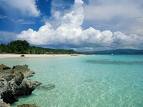
A new airport terminal and new air service put the part-Dutch, part-French, all-Caribbean island of St. Maarten on the list of destinations to watch in 2008. JetBlue will begin flights between New York and the destination dubbed "the culinary capital of the Caribbean" in mid-January.
Stavanger, Norway
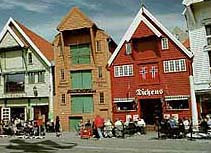
Europe's other 2008 Capital of Culture celebrates its designation with dance and acrobatic ski performances, open-air fairy-tale theater, and contemporary folk art exhibitions, among other events.
***********************************************
FIND MANY FLORIDA DESTINATIONS &
TOURIST BOARDS BY CLICKING HERE
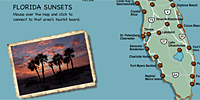
*****************************************
TheStar.com | Shopping | Crossing the line to get bargains
Crossing the line to get bargains
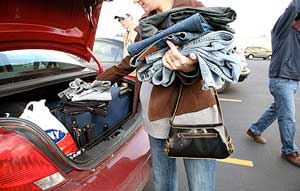
U.S. stores beckon, but first you have to inch across a bridge . . . and getting home – forget it
Nov 17, 2007 04:30 AM
Robyn Doolittle
Staff Reporter
Back in the olden days, Louis Garcia used to fudge his border declarations. Spend $500. Say $250.
"But not now. I don't want to take any chances. They know everyone's shopping, so they're stopping everyone," Garcia says.
Last weekend, the 30-year-old Oakville man booked a room at a Buffalo hotel for two nights with his wife and young daughter.
"That way, we qualify for the 48 hours exemption," he says.
It's a smart move. The penalty for making a false declaration is severe. Your goods may be seized and, depending on the circumstances, you may have to pay another 25 per cent to 80 per cent of the value of the merchandise to reclaim it. Undeclared alcohol and tobacco will be confiscated.
The Customs Act also allows border services officers to seize your vehicle. If this happens, you'll have to pay a penalty to get it back.
Finally, your infraction will be recorded in the customs computer system and saved for six years, meaning you're more likely to be searched in the future.
Still, Canadians are going to great lengths to avoid hefty duty and taxes.
Kerri, who lives with her husband Jay, near High Park, stopped outside the Coach outlet to snip the tags off her new purse.
"I didn't bring another one," she says with a wink.
And for the stuff that you can't wear home?
"That's what the spare tire case is for," Jay adds, gesturing to other bags.
Ever since the dollar hit parity, trash cans across Buffalo and Niagara Falls, N.Y., have been stuffed to the brim with shoe boxes, receipts and shopping bags.
"Last week, a woman walked out of here wearing four bras," says Clara, a sales associate at Gap Body in the Walden Galleria mall.
Over at Target, staff say locals are complaining about the Canadian crowds.
"We can't keep anything on the shelves," says Sara, who works cash. "You guys just buy up everything. It's insane."
Shoppers have gone so far as to wear old clothes across the border, ditch them, and wear an entire new outfit on the return.
But beware; customs officers are on the lookout for this kind of scam.
"All I can say on that is, people should be prepared to declare all purchases," says customs spokesperson Jean D'Amelio Swyer.
"The consequences for not declaring can be severe and long lasting.
"Our people have seen a lot of cross-border shopping, so they have ways of determining if it's a new purchase."
What ways?
Besides noticing a price tag hanging off the sleeve, D'Amelio Swyer won
HOW IT WORKS
Cross-border shoppers, beware: Great deals can turn out to be no bargain once taxes and duty are levied at the border. Nowadays, you might be let off paying duty (except on booze and smokes), but Ontario shoppers can't escape the PST and GST.
Tax and duty Exemptions
Same-day trip: No exemption
Overnight trip: $50 exemption, excluding alcohol and tobacco, but only if the goods you bring back are worth less than $50. Otherwise, you have to pay the full tax and duty on everything.
48-hour trip: $400 exemption plus a special 7 per cent duty. (Let's say you buy $900 in clothing, which is subject to a 17 per cent duty. The first $400 is tax- and duty-free and you are charged only 7 per cent on the remaining $500.) See below for more information on goods and the duties they are subject to.
Seven-day trip or more: $750 exemption.
If you have been away 48 hours or at least seven days, you may include one of the following in your exemption:
1.5 litres of wine
1.14 litres (40 oz) of liquor; or 24 x 355 mL cans/bottles (8.5 litres) of beer or ale.
If you have been away 48 hours or at least seven days, you may include all of the following:
200 cigarettes
50 cigars or cigarillos
200 tobacco sticks
200 grams of manufactured tobacco.
Examples of duty
Note: If these items are made in North America, you're off the hook. Almost all items manufactured in Canada, the U.S. or Mexico are duty-free.
Clothing and footwear, 17 per cent
Television, 5 per cent
Watches, 5 per cent
Other jewellery, varies
Stereo, 6 per cent
Alcohol, $29 in tax and duty on a $25 (U.S.) bottle of liquor; $59 in duty and taxes on a $100 (U.S.) bottle of wine
Beer, $13 in duty and taxes on a $20 (U.S.) case of beer
Cigarettes, $44 in duty and taxes on a $40 (U.S.) carton of cigarettes
BRIDGES
Peace Bridge: Toll is $3.50 or $3 U.S.; 10 auto lanes; one NEXUS lane; five commercial lanes that also can be used for cars; two dedicated commercial lanes.
Rainbow Bridge: Toll is $3.25 (either currency); 12 auto lanes; one NEXUS lane; one dedicated bus lane; no commercial lanes.
Queenston-Lewiston Bridge: Toll changed this week to $3.25 (either currency); six auto lanes; one NEXUS lane; four commercial lanes, three of which can be (but rarely are) used for cars; one dedicated commercial lane.
Whirlpool Rapids Bridge: Only available to NEXUS users. For information on this pre-approved travellers system, visit nexus.gc.ca.
MALLS, OUTLETS
Walden Galleria: The go-to mall, with Macy's, Lord and Taylor, Victoria's Secret, Bath & Body Works and Hugo Boss, plus such regular favourites as Banana Republic, Gap, Urban Outfitters, Abercrombie & Fitch and Sephora. It's about 30 minutes from the Fashion Outlets mall, but expect some minor traffic delays owing to construction.
Fashion Outlets of Niagara: The mothership of discount shopping, with Coach, Off 5th Saks Fifth Avenue, Burberry and Ralph Lauren, plus Banana Republic, J. Crew, Nine West and Sunglass Hut. The wait at the cash isn't quite as long as at the bridge, but be prepared to stand in line. Only a 10-minute drive from the Queenston-Lewiston crossing.
Target: Best to arrive early if you're hitting the store near Fashion Outlets. By early evening, the shelves and racks are literally empty. There are other Targets farther afield.
Here's a step-by-step guide for the neophyte cross-border shopper:
Before leaving home: Bring your passport to ensure a no-hassles crossing. Kids younger than 16 need a birth certificate. And throw some warm coats, blankets, and a few umbrellas in the trunk. Folding lawn chairs couldn't hurt, either. On the way back, you'll most likely be waiting outside to pay your duty and taxes.
Leave early: If you aren't on the road well before 7:30 a.m., you're going to hit thick traffic at the bridges. Plus, once you finally get to the shops, parking spots will be scarce.
Parking: Make sure you're in the mall lot. Niagara police are ticketing Canadian drivers who park in adjoining lots. (It seemed to one observer that U.S. vehicles were left alone.)
Leave even earlier: If you're going to Target or the Off 5th Saks Fifth Avenue outlet, try to arrive before 11 a.m. Otherwise, stuff will be considerably picked over. As you shop, tuck receipts in your wallet so you have them ready at customs.
Bring U.S. currency: Come lunchtime, be aware that many food places – especially outside of shopping centres – don't take Canadian dollars. The ones that do accept the loonie will only give you about 90 cents for it.
Return early: There seems to be no good time to head home these days. If you really can't handle the line, leave before 2 p.m. (although that doesn't make for much of a shopping trip).
Or think happy thoughts: A better plan is to just focus on the savings and mentally prepare for the looming gridlock. Pack a snack, grab a coffee and head to the washroom before starting back to Canada.
Be prepared: By the time you get close to the Duty Free, you may be in need of another hot beverage and a bathroom break. Do it. This next part may take awhile.
Have your answers ready: When you finally make it to customs, you will probably be asked the following: Where have you been? How long were you gone? How much did you spend? They know you've been shopping, so don't bother lying.
Expect vigilance: Officials are checking trunks more frequently. Last weekend, customs officers were inspecting virtually every car that didn't declare anything.
Next, the reckoning: Once officials are satisfied that you've told them everything, they'll jot your declaration down on a yellow slip of paper, tuck it into your windshield wiper and direct you to an officer standing in the centre of the road about 50 metres away. That person will point you first to a parking lot, then to a customs office where you'll pay taxes and duty. (If you're wondering what will happen if you just keep driving – it's a $1,000 fine and you risk prosecution.)
When it's your turn to pay up, an officer will take the yellow piece of paper and your receipts, assess your taxes and possible duty fees, and fill out a form online. (On one recent trip, customs officers were typically charging duty on only alcohol and cigarettes.)
You will be directed to another line to pay and can use travellers cheques, debit cards, Visa, American Express, MasterCard and, of course, cash. The officials will hand you a white receipt and you're on your way.
Weekday shopping is the better way to go
Timing is everything. If you want to shop in New York but avoid a mind-numbing wait at the border, customs officers have some advice: Go during the week.
"We just don't have the facilities to deal with this extreme surge in cross-border shoppers," says customs spokesperson Jean D'Amelio Swyer.
"We're doing everything we can to process travellers quickly, but the best advice I can give you is to avoid the weekend."
Weekend peak periods on each of the three main bridges – Peace Bridge, Rainbow Bridge and the Queenston-Lewiston Bridge – have typically been between 4 and 10 p.m. But, now, three-hour delays are beginning as early as 2 p.m. and lasting until 3 a.m. – or later.
If these numbers aren't enough to scare you off bargain shopping, here is advice regarding the route you choose as well as the time you travel that can make crossing easier:
Leave the house early. Crossing into the States is taking more than an hour on most bridges, so plan to hit the border no later than 9 a.m.
Remember to call 1-800-715-6722 for an update on the traffic conditions. You can also look up delays at cbsa.gc.ca/general/times/ menu-e.html on any Web-enabled device, such as your home computer, cellphone or BlackBerry. Chances are the Queenston-Lewiston Bridge (the most direct route to Niagara Falls, N.Y., from Toronto) has a longer wait than the Rainbow and Peace bridges. The closest bridge to your house isn't always the fastest option. Especially since MapQuest and Google Maps only direct people to the Queenston-Lewiston.
Also factor in sporting events, says U.S. customs spokesperson Kevin Corsaro. The Peace Bridge, for example, is the closest to Ralph Wilson Stadium, home of the Buffalo Bills (who only play on Sundays), and HSBC Arena, where the Buffalo Sabres play. So, check game times.
Consider staying overnight and heading home in the morning. After waiting at the bridge and waiting to pay taxes, you're not going to get home until the middle of the night anyway. Plus, an overnight stay makes you eligible for a duty exemption.
Joining NEXUS is always an option. This is a members-only border-crossing option for pre-approved travellers. People are able to cross using self-serve kiosks in designated areas. And as of Dec. 1, the non-refundable NEXUS application fee of $80 will be reduced to $50. Membership is valid for five years. The Whirlpool Rapids Bridge is for NEXUS users only and other bridges have NEXUS lanes. For more information visit nexus.gc.ca.
***********************************************
Six BBQ meals in Florida
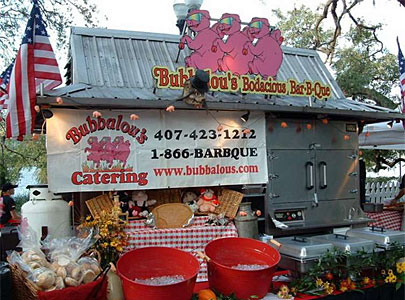
Richard Ouzounian
Toronto Star
The average Canadian snowbird often complains that dining decently in Florida can be an uphill struggle. Outside of generic places catering to tour buses and "Early bird" specials for seniors, it can seem like the entire state is nothing but Denny's, Arbee's, Applebee's and other apostrophe-bearing fast-food chains.
Take heart. Don't forget, Florida is still the South and there is always good BBQ in the South if you know where to look.
Here are six old favourites I've nurtured over the years:
SHORTY'S BBQ
9200 South Dixie Highway, South Miami. 305-670-7732.
This is the original branch of the five-store empire and it's been cooking since 1951. I've been going there since I was a kid and it always pleases. It's loud, casual and friendly with people crowded together at long trestle tables, but the food hits the spot. Their pork and beef sandwiches remain my favourite and their onion rings are killer.
Other locations in West Miami (11575 SW 40th St. 305-227-3196); Davie (5989 S. University Dr. 954-680-9900); Doral (2255 NW 87th Ave. 305-471-5554); and soon in Deerfield Beach (120 S. Powerline Rd. 954-596-2448.)
For more information, go to: www.shortysbbq.com
BUFFY'S SOUTHERN PIT BBQ
3911 49th St. N., St. Petersburg 727-522-0088.
You get two restaurants for one at this local favourite, connected by a noisy bar that can get rowdy late in the evening. To one side, there's fall-apart-in-your-mouth ribs, set off by a secret sauce that combines just the right amounts of hot, sweet and tangy. And on the other side is a more conventional menu, highlighted by a 1/2 lb. charcoal-grilled burger that is one of the best I've had anywhere. Entertainment on weekend nights, too!
For more information, go to www.biffburgers.com
JIMBO'S PIT BBQ
4103 W. Kennedy Blvd., Tampa. 813- 289-9724.
I stumbled on this place with my family on a cold, rainy night and we instantly felt right at home. Lots of locals who've been coming here for decades. Families order platters of succulent beef, pork, ham or chicken that come with perfectly seasoned cole slaw and the Platonic ideal of a hush puppy – balls of golden corn meal deep fried to crispy, fluffy perfection.
BUBBALOU'S BODACIOUS BBQ,
1471 Lee Rd., Winter Park. 407-628-01212.
This is only five miles (8 km) from Orlando and a good hideaway if you're seeking a respite from the corporate homogeneity of Mickey Mouse and his ilk. Some of the smokiest "Q" that I've ever eaten is served here and their pulled pork is about as juicy and flavourful as it comes.
They also have regional treats like Brunswick stew, but be careful: their BBQ sauces are graded according to heat and "mild" may be more than enough for most Northerners.
For more information, see www.bubbalous.com
BETTY'S SOUL FOOD AND BARBECUE
601 NW 22ND Rd., Fort Lauderdale. 954- 583-9121.
In the increasingly upscale, chic and gay climate of Ft. Lauderdale, you may find it hard to locate a bit of authentic funk, but here it is. No frills, no airs, just real home cookin'. As the name indicates, it's equally divided between soul food and barbecue, but both have a lot to recommend them. The pigs' feet, collard greens and yams are lip-smacking good, but so are the ribs and BBQ chicken. A win-win situation.
METEOR SMOKEHOUSE
404 Southard St, Key West. 305-294-5602.
If you find yourself down here in this historic, raunchy and party-hearty town at the southernmost tip of Florida, you may sense the need – after too many margaritas the night before – for something smoky and zesty to clear the brain.
Look no further. The dry, seasoned ribs will set your mouth singing, the spicy green beans kick the heat up further and soon you'll find yourself reaching for an ice cold beer ... and it all starts again, but that's life in Key West.
***********************************************
Sun, sand... and root canal
Cheap dental care lures Canadian seniors to Mexican border town

Jason Rothe
Special to the Star Dec 8, 2007
LOS ALGODONES, MEXICO–A long line of tanned, silver-haired pedestrians stretches down the sidewalk. They carry colourful shopping bags that bulge with prescription drugs, eyeglasses, cheap liquor and plastic souvenirs. Most are on foot, some have walkers and others pilot electric wheelchairs.
It is a familiar site: Snowbirds returning home. But in recent years, a new breed has joined their ranks. They are easy to pick out – those with ashen faces and wads of gauze pressed to their mouths.
During peak travel season in January, more than 30,000 tourists cross the border between Los Algodones and Andrade, Calif. Most are Americans, but the second-largest group is Canadians. Traditionally, they are lured here by endless sunshine and cheap prescription drugs. But increasingly, Canadian retirees are making the journey for cheap dental care.
Dave and Lucille Flintoff from New Westminster, B.C, opted to spend the winter at an RV park in Yuma, Ariz., so they could get their teeth fixed in the dental mecca of Los Algodones just 10 minutes across the border.
"If you look at the long-term picture, it pays for this trip," says Dave, sipping a cold beer on the shady patio in front of their RV. Both he and Lucille had good dental plans while they worked and made a point of getting their teeth into top condition before retiring. But shortly after giving up her dental coverage, Lucille, 62, went for a checkup and came back with an estimate for more than $10,000 worth of work.
"I couldn't believe it," she says, "I thought, `There goes all our retirement money.'"
According to Statistics Canada, she's not alone. Only 22 per cent of women aged 75 and over had dental insurance in 2003, compared to 69 per cent of women aged 25 to 54.
Frustrated, and on the advice of a friend, the Flintoffs decided to give Mexico a try.
"Now we couldn't be happier," says Dave. "She's got her bridges and everything is done. They look good and she feels good. She's going to take them a thank-you card before we go home."
For retirees with no dental coverage and a limited income, dental tourism is enticing, and increasingly the only option. Unlike other popular destinations like China, India and Thailand, Mexico is within driving distance and accessible to seniors who don't want to get on a plane. The prices may not be as low as in some countries, but they are still cut-rate compared to Canada – an average root canal costs $200 to $300 in Mexico, compared with $900 to $1,100 in Toronto. Most procedures are one-third the cost on average.
Dr. Bernardo Magana claims to be the first dentist to set up shop in Los Algodones. Nowadays, the tiny town has more than 350 dentists, countless doctors' offices, optometrists and pharmacies in addition to bars, brothels and liquor stores.
Los Algodones has become a dusty mall of border commerce supporting a cross-section of Mexican society, from the wealthiest doctors and restaurateurs, to barbers and retailers, street vendors and shoeshine kids. And the place is friendly to Canadians. Most retailers display the Canadian exchange rate, and a large sign at the parking lot on the California side reads, "Canadians are welcome."
Upon entering the town, tourists are bombarded by hawkers:
"You look for a pharmacy?"
"Does grandpa need a little Viagra?"
"Are you looking for some dental work?"
Street salesmen in Los Algodones, while they accept the occasional tip, never ask tourists for money. Rather, they are paid commission by the businesses to which they direct customers. The town is tightly controlled and anyone who upsets the flow of dollars is whisked away by the tourist police.
Safety and quality are the dental tourists' biggest concerns. Some Canadian dentists caution about lax sanitation standards, poor equipment, inadequate training or shoddy workmanship. If that was true, one would expect a swarm of horror stories buzzing among the RV crowd, but the situation is quite the opposite.
"If there was any systemic problem, you'd know," says Mark Lowans, assistant field manager of recreation and visitor services at the U.S. Bureau of Land Management's Yuma field office. "They have a communications system that is almost scary. They get on their CB radios and, if there was a problem in Mexico, you'd just see them part like the Red Sea. But I've never seen that. I just see them keep going."
In Los Algodones, Dr. Armando Hernandez Mejia practises as an endodontist with 24 years of experience. He completed basic dental training in Mexico City and endodontic specialty training in Monterrey, Mexico. He then studied microscopic surgery in the United States and is now a guest lecturer at the University of Illinois.
Hernandez's office feels more like a country inn than a dental clinic. It is colourful, faced with terracotta, brick and stucco. Outside is a lush collection of plants and a shaded patio where patients can relax before and after their appointments. The waiting room is air-conditioned and decorated with local artwork and brochures published by the American Association of Endodontists. Not surprisingly, all the chairs are filled with seniors discussing where to find the best fish tacos and what's on sale at the Wal-Mart in Yuma.
The operating rooms are more clinical, painted white and blue, and the walls are covered with LCD monitors. Hernandez runs his hand under a large microscope and it appears on the wall in front of him, enlarged several times.
"I was trained in the microscope field," he says, "just like neurosurgeons, just like ophthalmologists. They use a microscope, so now with our practice we use a microscope too."
While the average rural practitioner in Mexico is unlikely to have the latest technology, dentists in Los Algodones who rely on foreign patients must exceed foreign expectations or go out of business.
"We have a double problem here," says Hernandez. "We have not only the dental procedure that we have to perform, but we have to convince our patients that we can do as good as in the United States or in Canada."
Many Canadians are already convinced. Bob and Arlene Cook of Campbell River, B.C, pay $2,000 a year to leave their trailer at an RV park on the Colorado River. Like most people, they were skeptical about getting dental work done in Mexico, but as Bob says, the rumours are good.
"It's word-of-mouth. Everybody asks, `Who'd you go to, how'd it work out, how long have you had it?' It's like anything else, it's buyer-beware."
According to Bob, part of the process is sifting through the rumours to find the truth. The other part is common sense.
"I've heard of them pulling a lot of teeth at once, which I don't think is a very good idea. But then, that's your choice. If the guy says he wants to pull 13 teeth, you can say no."
For the Cooks and many others, saying no to 10 months of Canadian winter to explore the desert and do some adventuring in Mexico is a freedom that comes with age.
"We all hate the government you know, all the older people," says Bob, grinning.
"We'd rather look after ourselves than have the government look after us. So people come down here. Myself, I get glasses. And Arlene gets her teeth."
JUST THE FACTS
WHEN TO GO: Peak season is from January to early March although winter visitors begin arriving in November and some stay until April or later. All services are available year-round.
WHERE TO STAY: Yuma, Ariz., and Winterhaven, Calif., are about 15 minutes by car from the border at Andrade, Calif.
HOW TO GET THERE: Delta and US Airways have regular flights to Yuma International Airport (YUM), which connect to Canada flights through various U.S. hubs. A large parking lot, pay phone and RV camping are available on the Quechan reservation, next to the border.
OTHER ATTRACTIONS: Imperial Sand Dunes, Colorado River, Organ Pipe Cactus National Monument, Picacho State Recreation Area, Cibola National Wildlife Refuge.
www.losalgodones.com
|
























































